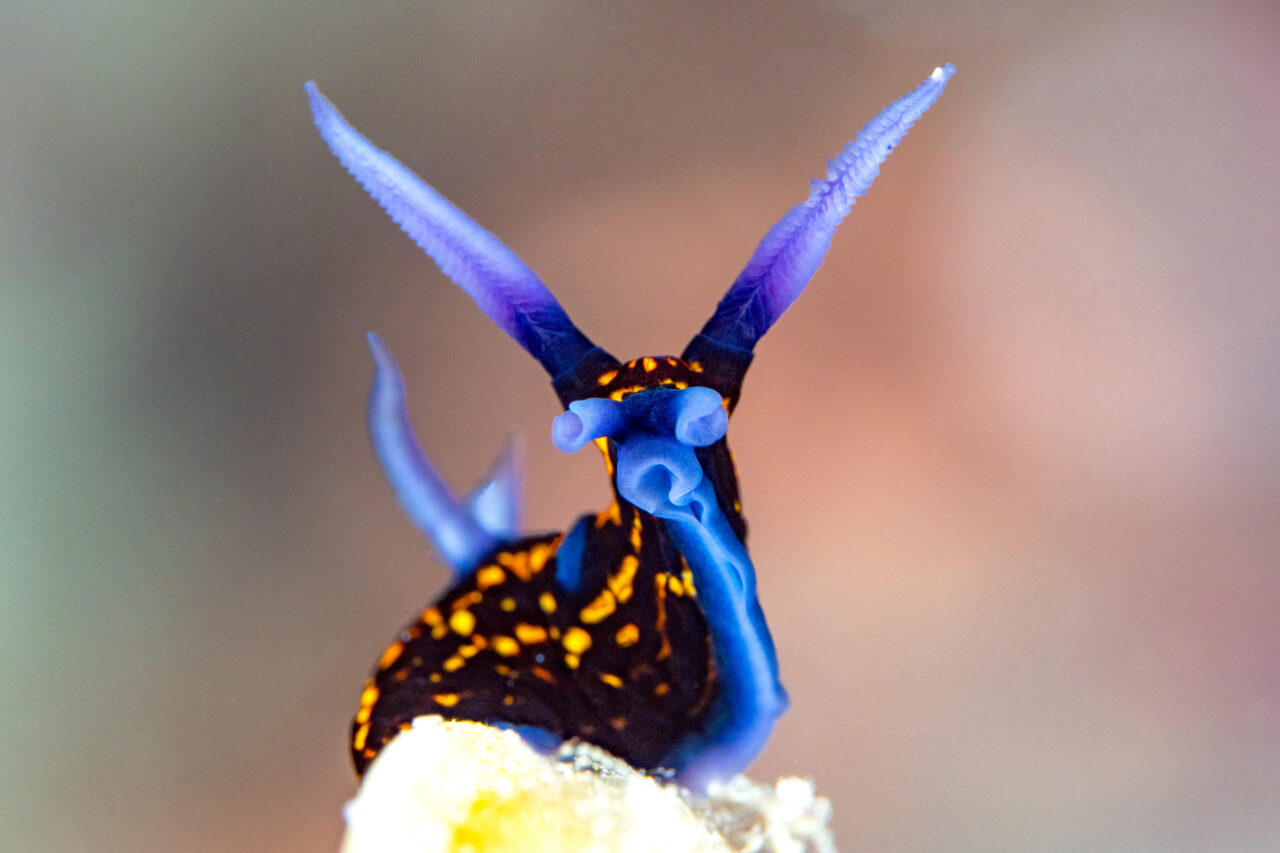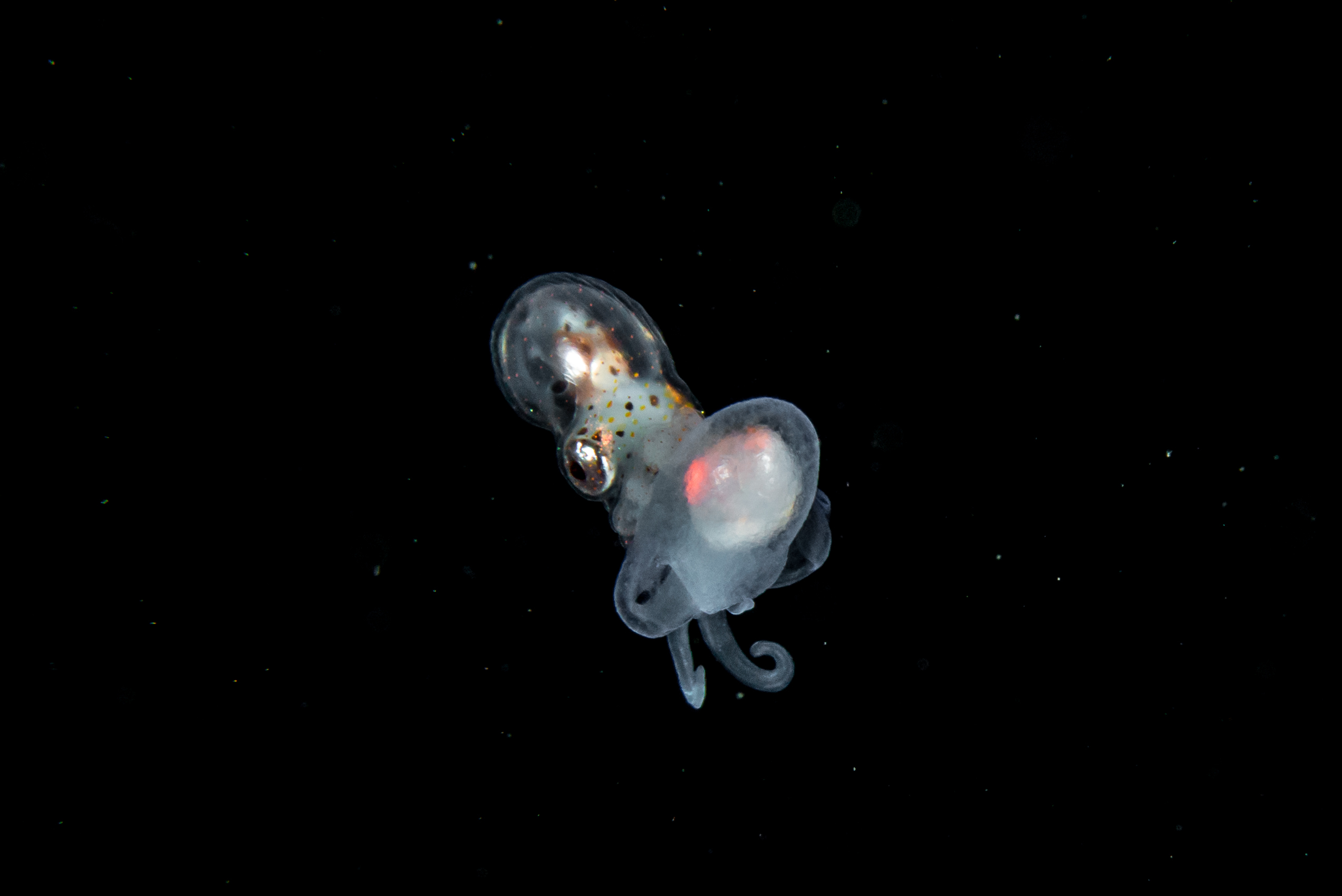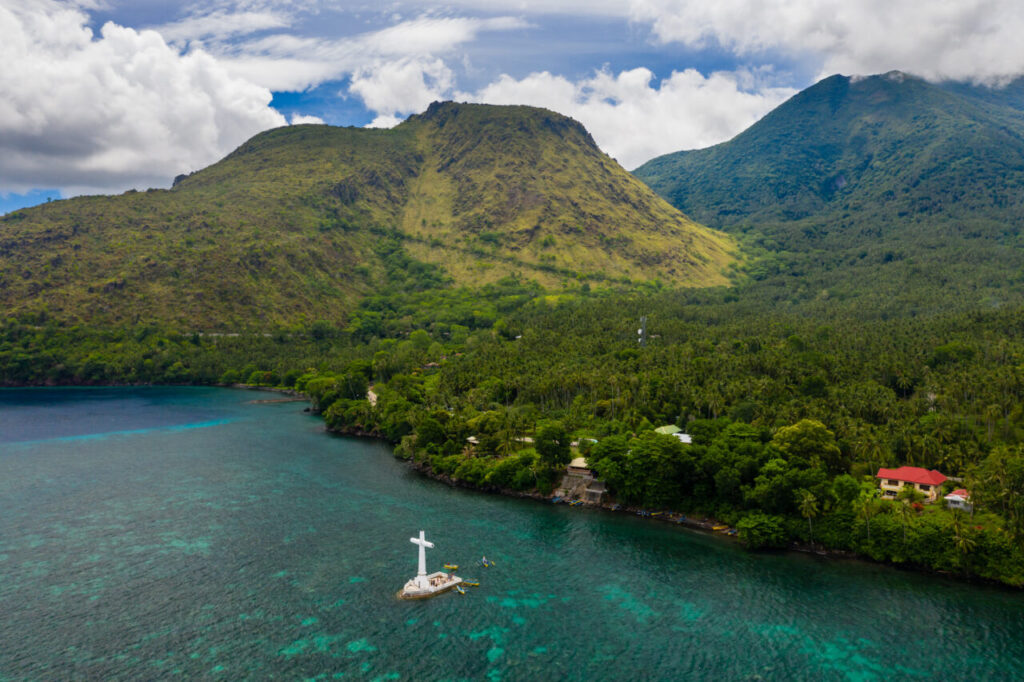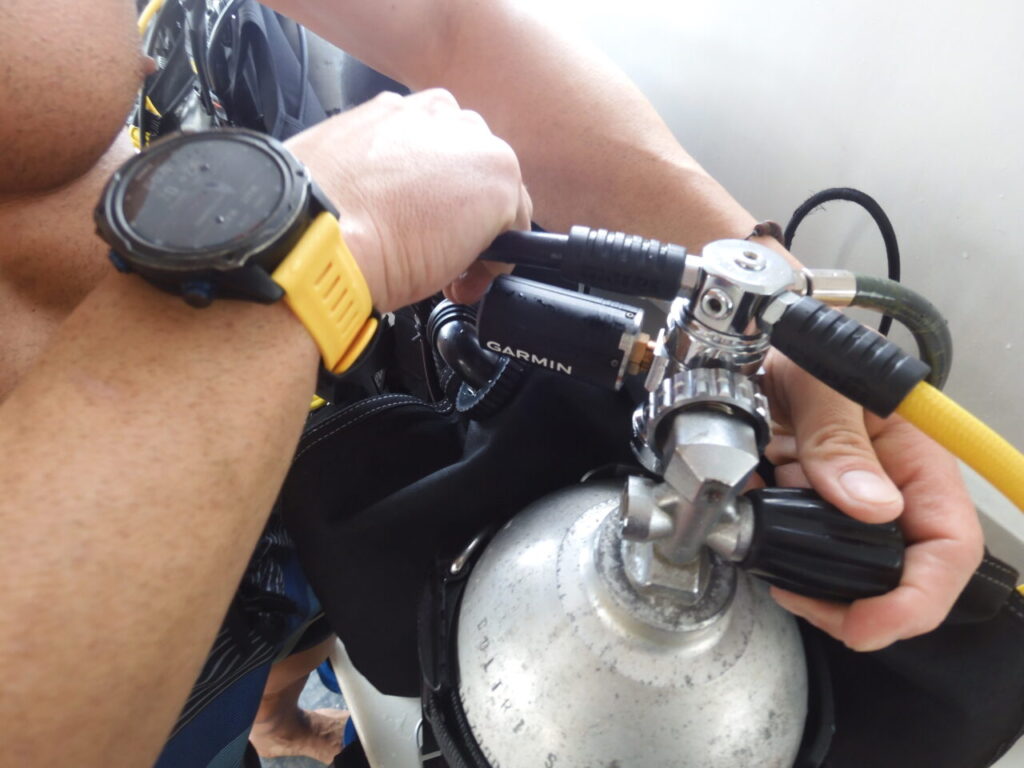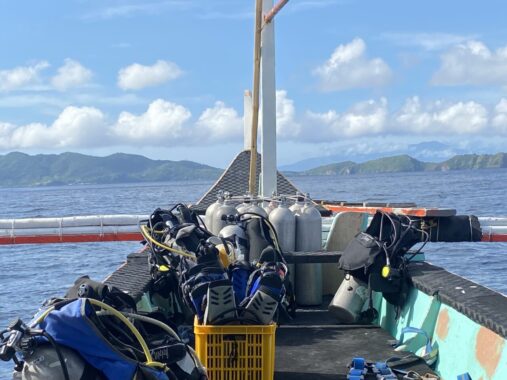
Ahhh sweet Anilao! Anilao is a small Barrangay (town) located in the Batangas Province of the Philippines and an epic place to go scuba diving.
(The terms Anilao diving and Batangas diving are used interchangeably but both refer to the 50+ dive sites located off Anilao town which is within the province of the Batangas).
Because it’s just a 90 minutes taxi ride from Manilla Airport, Anilao is the country’s easiest to reach dive destination. Most dive sites are beginner friendly and accessible year round.
But what is it that makes scuba diving Anilao special?! Well, for starters, Anilao offers some of the best macro and muck diving in Southeast Asia – plus blackwater diving!
Macro diving is searching around coral reefs for small critters like seahorses, nudibranch, frogfish and unusual little crabs and shrimp!
Muck diving involves looking for different (often even smaller) critters in bare mud or silt seabeds like flamboyant cuttlefish, blue ringed octopus and teeny tiny nudibranch!!
Blackwater diving is a special type of night diving in deep waters with led lighting rigs to attract denziens of the deep like nautilus, larval fish and crustaceans as well as nautilus, octopus and squid!
Anilao divers will also see many coral and plenty of reef fish; the usual suspects like clownfish, lionfish, batfish etc and huge clouds of redtooth triggerfish and wrasse plus the odd group of sardines.
Garden ribbon eels, giant clams and barracuda are all pretty common and it’s also pretty fairly to spot a turtle or two.
At a few dive sites extra lucky scuba divers can even see eagle rays, bamboo sharks, blue spotted stingrays and blacktip reef sharks.
By now, you’re probably chomping at your regulator to go there but lend me your time for a mo and we’ll cover all you must know. (To have a great diving trip in Anilao!).
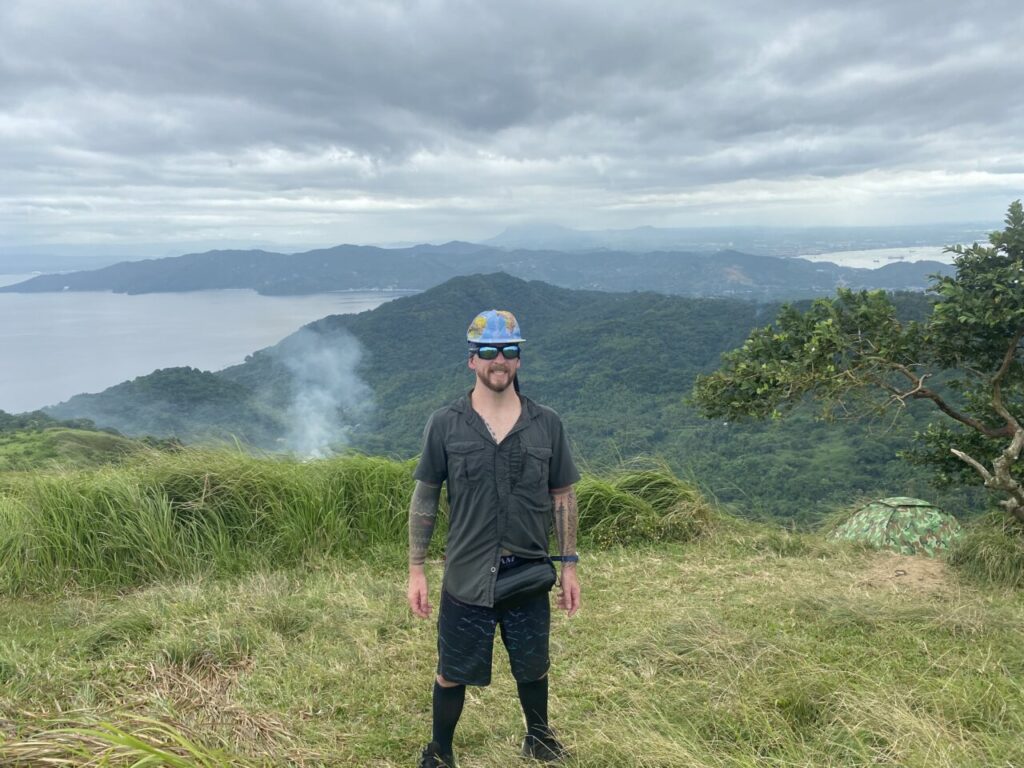
I have fond memories of scuba diving Anilao, Batangas – it was the last point of call on my biggest trip yet to the Philippines an 8 month scuba oddyssey that occured in 2023.
With this guide, I’ll tell you everything you need to know about diving Anilao – the best Batanagas dive resorts, best dive sites, when to go, how to go on a blackwater dive, what else there is to do (like trek!), prices of diving and more!
Table of Contents
Best Batangas Dive Sites
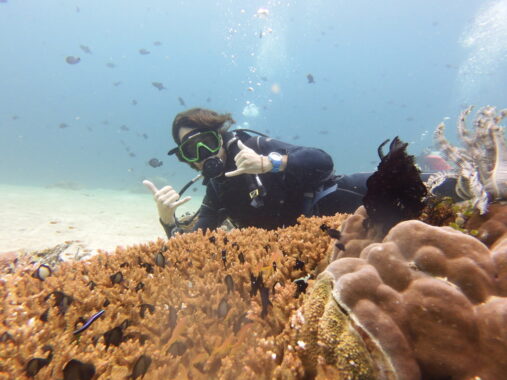
Anilao boasts over 50 dive sites; the vast majority of these are beginner friendly; being in shallow waters of about 10 – 20 meters deep, close to the shore and absent of currents. This makes the Batangas a great place to get scuba certified!
Most Anilao dive sites are over hard and soft coral gardens that are home to a multitude of fish and critters like nudibranch, frogfish, scorpionfish, pipefish, seahorses and crustaceans etc ; little surprise then that Anilao is haled as a macro divers paradise!
Anilao coral reef is of variable condition, in places it is still very good; especially around the soft coral gardens but parts of the hard coral have been damaged due to typhoon activity and sadly, careless diving.
There’s also a great many reef fish plus turtles, blue spotted stingrays, giant clams, gardon ribbon eels. At some dive sites, lucky divers can also see eagle rays, blacktip reef sharks, blue spotted stingrays and guitar sharks. Noice.
As well as diving over reefs for macro; there are also some muck dives. Here, there isn’t really any coral and instead the seabed is simply a muddy or silty desert. At first this desert may seem a lifeless one but it’s actually a great place for spotting other micro critters like cuttlefish, squid, octopus and teeny tiny nudis. These muck dive sites are also great for night dives!
However: macro dive, muck dive or night dive; not all Anilao dive sites are equal! In fact, quite a few only serve for open water certification training. But never fear! It’s easy to make sure your trip features the best ones so long as you know what they are so you can ask your dive centre / resort to take you there. So, let’s dive into taking a look at the best dive sites in Anilao:
1) Twin Rocks
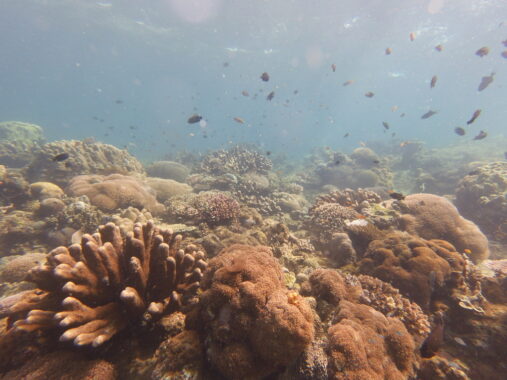
An all time classic and diver-favourite, Twin Rocks is not to be missed! A stunning yet easy dive site that’s suitable for beginners, it’s centred around two coral covered pinnacles that drop down to 16 meters and are surrounded by various rocks and coral gardens.
This is a great dive site to see impressive underwater landscapes covered in generally healthy soft and in places damaged hard coral; home to many critters especially various nudibranch and pipefish but also crustaceans, seahorses and scorpionfish. There’s also countless reef fish and sometimes even the odd turtle or blue spotted stingray.
Twin Rocks takes a little longer to get to than the more local dive sites (around 45 – 60 minutes depending on where your dive resort is but only 45 from Anilao Scuba Diver Centre), but it’s worth the ride which is actually very scenic as it goes past the epic cliffs of the Batangas coastal region. You’ll see much vertical jungle and even snag a view of Mount Guluogod which makes an even more epic trek viewpoint.
2) Cathedral
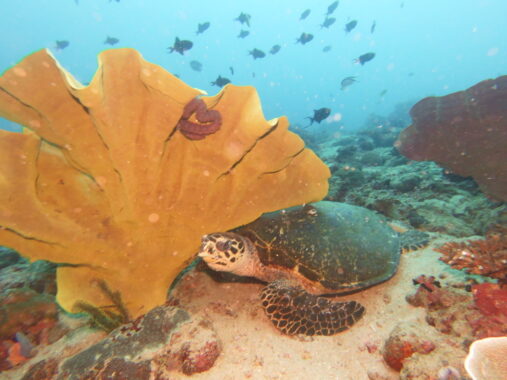
Another highly popular dive site and one that is pretty close to Twin Rocks meaning they’re often paired together, the 18 meter deep seabed of Cathedral is littered with coral coated rocks. Two of these rocks are larger than most – massive indeed and in between them has been sunk a stone cross that was put there by Philippines President Fidel. V Ramos. Now, it’s beautifully covered and encrusted in coral.
This is another easy dive site; yet is one that is still rather impressive and epic so it’s often the last dive for students passing their open water certification. Like Twin Rocks, Cathedral is also home to manny reef fish, critters and corals.
3) Secret Bay
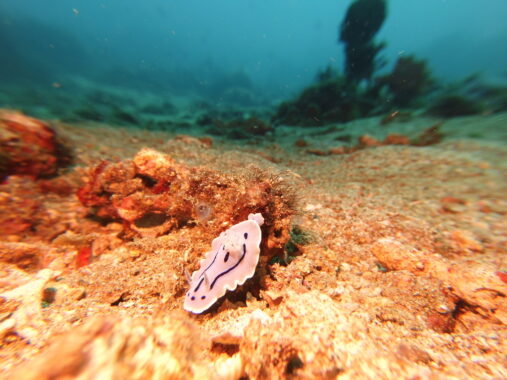
This is a muck dive site; meaning most of the sand bed is comprised of silty rubble – at first it may appear as a barren wasteland but on closer inspection there are all kinds of curious critters that can be seen here including seahorses, nudibranch and especially between November and March, many cuttlefish and squid.
Secret Bay also makes a fine night dive, where throughout much of the year one can see many octopus plus squid and all manner of crustaceans and small nocturnal fish. Whereas most night dive sites stay at 10 meters or less, the Secret Bay dive site actually goes to 21 meters; at which point some of those critters already start to get weirder looking.
As of when I went in Nocember 2023 Secret Bay was the most popular muck dive site, however this can shift with time due to currents changing and shifting sealife around every season.
4) Anilao Pier
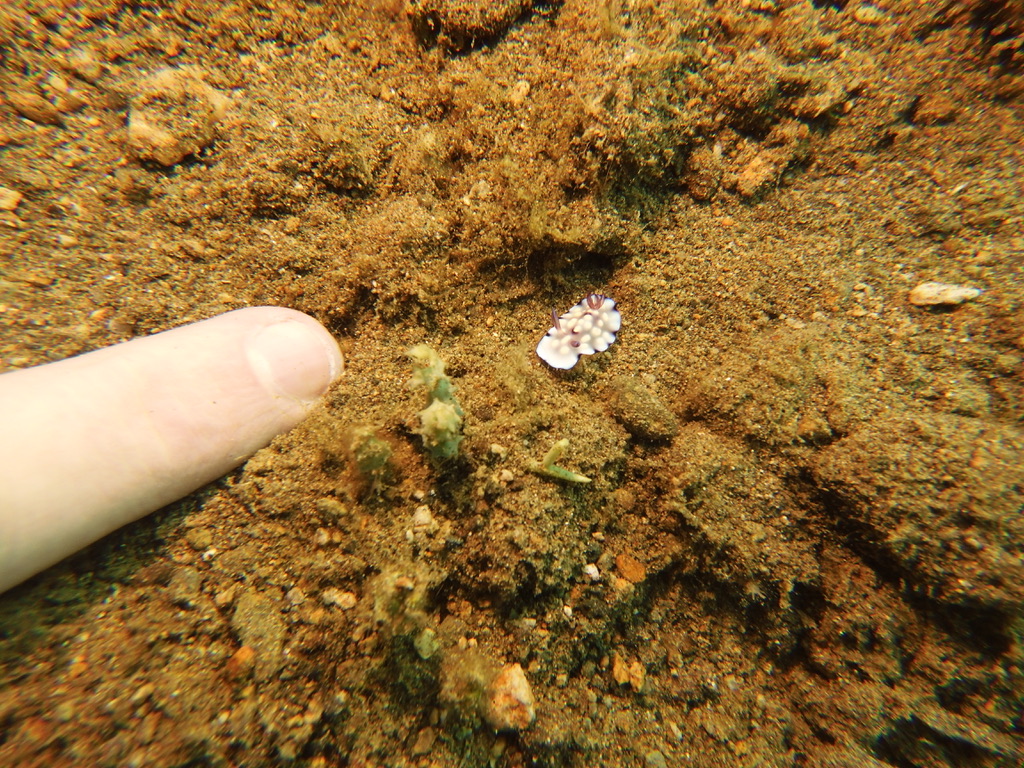
Another muck dive; though less well known than Secret Bay, Anilao pier is also a great place for spotting al manner of cephlaphods, uncommon nudibranch and crustaceans. It’s also a popular night dive for beginners as it only drops to a maximum of 12 meters deep.
5) Ligopo Island
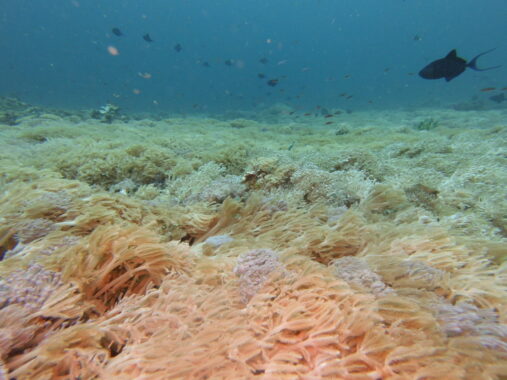
I saved the best for last! Ligopo Island was actually my favourite Anilao dive site. It consists of a mighty wall covered in gorgonian fans, a 35 meter pinnacle and a visually stunning living pink carpet of soft coral and anemones. Amidst this, dwell a great many critters including exceptionally tiny yet colourful nudibranch, pygmy seahorses and teeny crabs and shrimp.
Countless redtoothed triggerfish fill the air like blue leaves swirlig around as small schools of sardines sometimes dart past. This is also one of the better places to see a hawksbill turtle, come to feed on the pink soft coral!
Ligopo Island is a slighlty more advanced dive site at 35 meters deep and sometimes experiencing mild to moderate currents. It can therefore be used for deep dive or drift dive training when certifying advanced open water divers.
Check out this short clip I made of Ligopo Island dive site:
Black Water Diving in Anilao
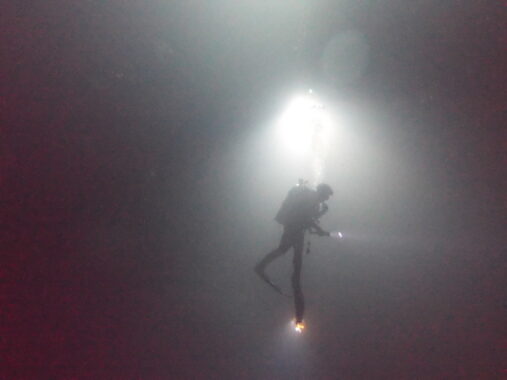
Anilao is unique in that it’s one of the few dive destinations in the Philippines and indeed the world where there are frequent blackwater dives; a truly unique and fascinating type of night dive.
Blackwater diving is for experienced divers with at least 50 logged dives and prior experience on regular night dives.
But what is blackwater diving you ask? Whereas most night dives start and stay in fairly shallow waters at 6 to 20 meters, blackwater diving involves taking the boat out to much deeper, open waters.
A thirty meter long rig with various LED lights is lowered into the water and then left for ten minutes. The idea is to attract all sorts of nocturnals marine life – like nautilus, squid, octopus and various crustacean larval forms – of course, you never know what will turn up and people see some very fascinating and otherworldly creatures down there!
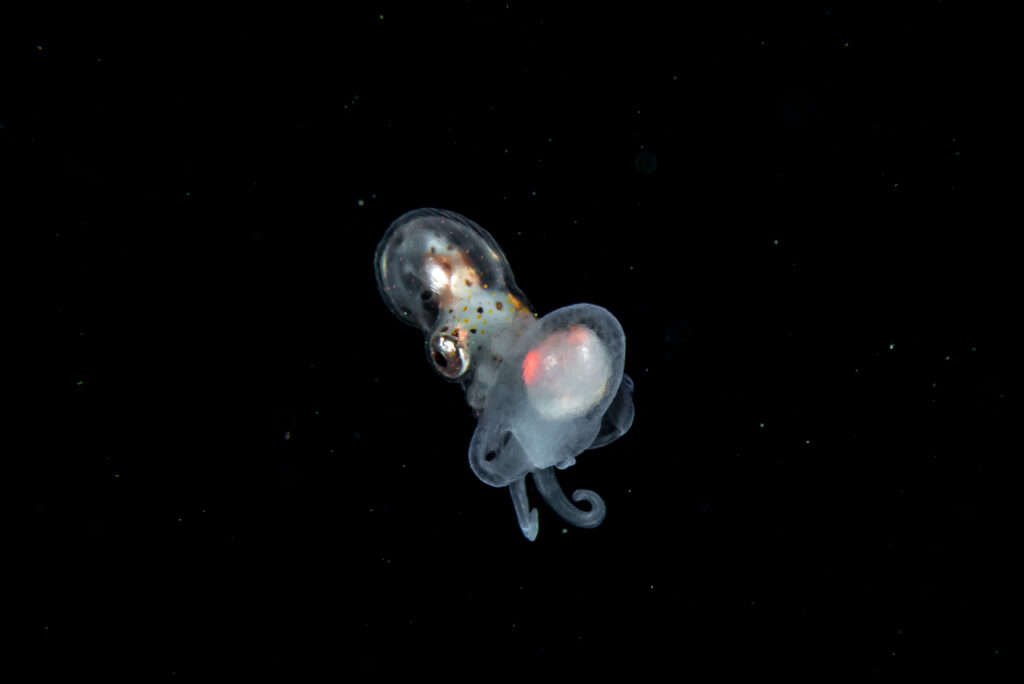
The very best time to do this in Anilao is between January – March – this is when the coolest critters can turn up such as the beloved Nautilus (that thing which is basically a living ammonite fosil). It’s also much easier to arrange blackwater diving during this time as more dive centres offer it for these months.
However if you find yourself there in low season you can still go blackwater diving – if you know where to look! Thats what I did when I was there in November. Just hit up Anilao Diving & Resorts; they will take you blackwater diving at any time of year.
Although I didn’t see no Nautilus there were all manner of jelly like beings as well as larval crustaceans and fish, octopus and squid all slithering around me in the dark. It still totally rocked!
5 Best Batangas Dive Resorts
When it comes to choosing where to stay and dive in Anilao; it makes sense to choose a dive resort. Now – whilst Anilao is for some reason more expensive to stay and scuba in then most other Philippines dive destinations; there are actually a couple of very affordable options with chill vibes and cool people.
I’ve listed the all-time cheapest Anilao dive resort first as that’s where I stayed and I loved it. Afterwards, we’ll look at some of the mid-priced and more fancy dive resort options!
1) Anilao Scuba Dive Center (Cheapest & Top Pick!)
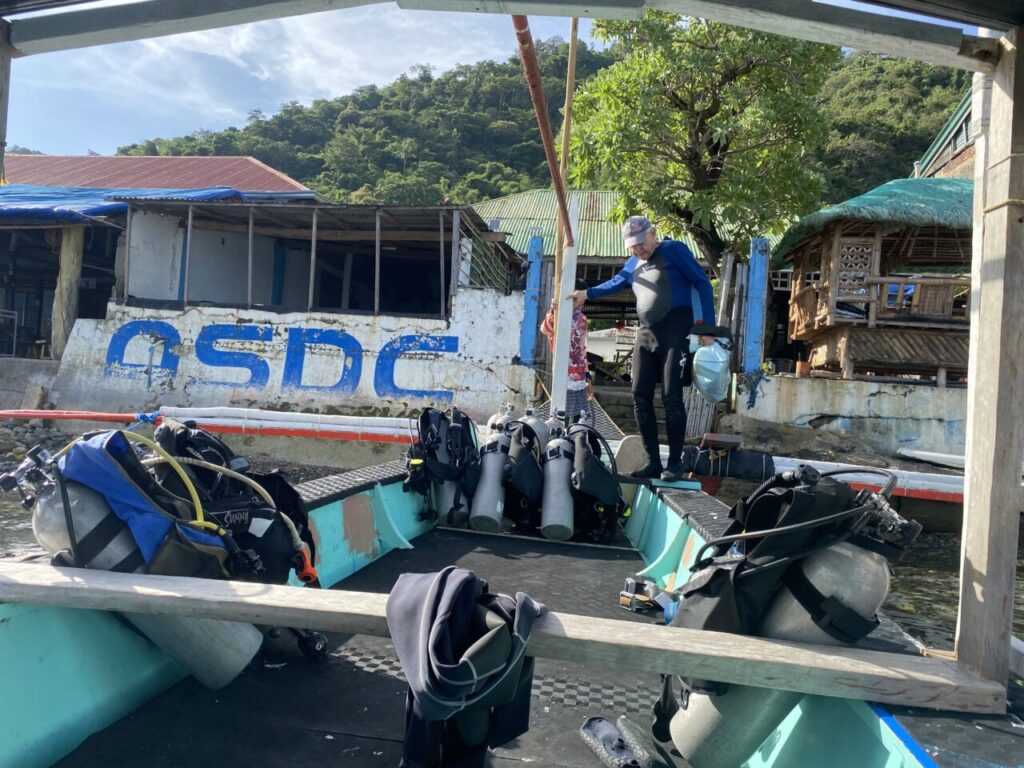
I chose Anilao Scuba Dive Center to stay at and dive with as they’re cheaper than all other Anilao dive resorts.
The accommodation is more like a homestay than a resort; rooms are basic but sufficient and there’s a cute little restobar with simple but good food.
It’s situated along the beach and has stunning views of Balayan Bay – there’s an in-house dive centre with good rental gear and friendly, experienced guides.
Location is good – it’s 2 km from town centre; so away from the noise but not too far to walk in.
I really enjoyed my stay at Anilao Scuba Dive Center – it was a cool place that attracted various interesting backpacker-diver folk. Awesome value for money!
2) Eagle Point (Most Luxurious)
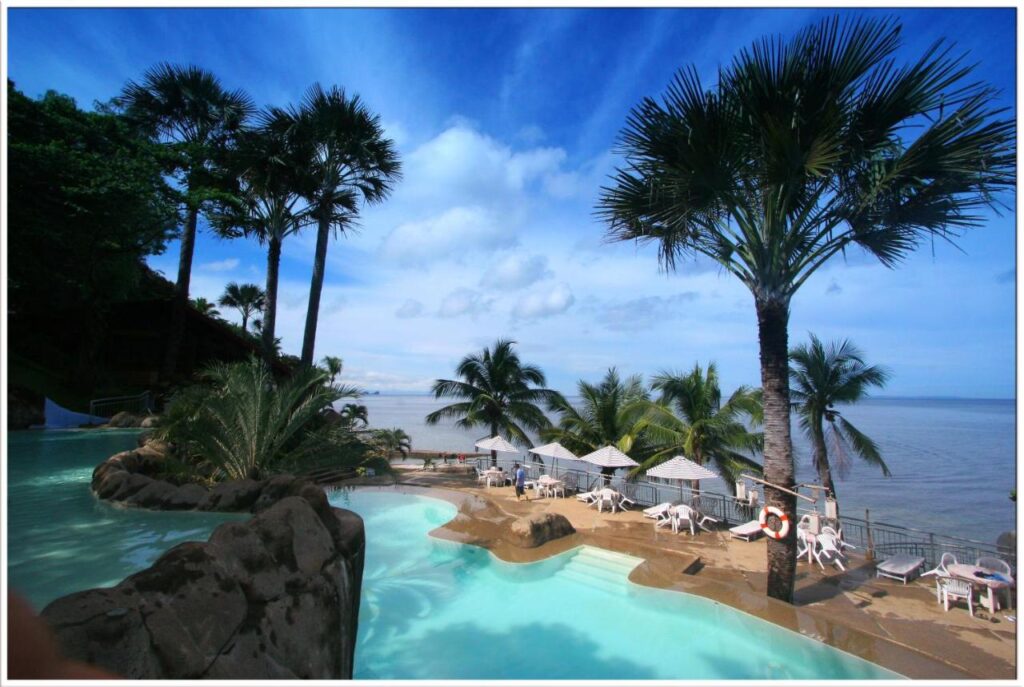
Most Luxurious: Eagle Point ($$): Any search query to do with quality dive resorts in Anilao will quickly churn up Eagle Point Beach & Dive Resort.
This Anilao dive resort boasts four swimming pools overlooking a private beach, private balcony rooms and an excellent restaurant serving excellent food.
Beginner divers and snorkelers will enjoy the house reef out front – it’s home to baby sharks and beautiful soft coral gardens.
The dive centre is very well equipped with high quality rental scuba gear and highly trained guides. Eagle Point is more expensive than Anilao Scuba Dive Centre…but perhaps not by as much as you’d think!
3) Saltitude Dive & Beach Resort (Unique Rooms)
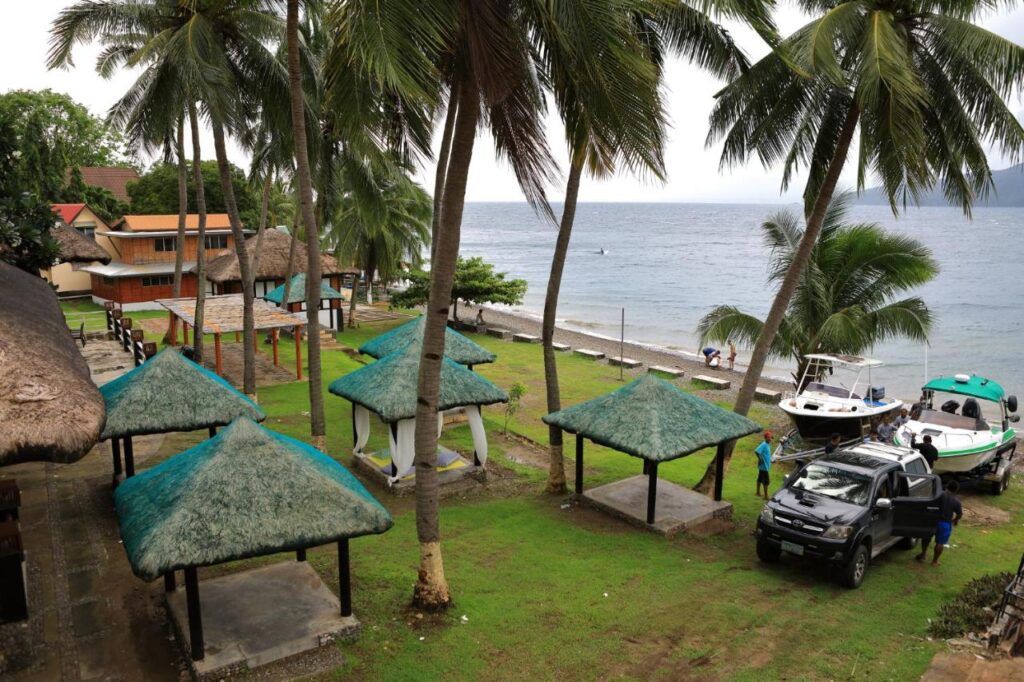
Every room is uniquley designed and outfitted with a theme in mind.
Choose from vibes like “fall in love” room to nauytical themed “Snorkel” “Kayak” and “Sail” cabins or well decked out “party” rooms! Yayah.
This mid-priced resort is located along the beach, there’s a bar and restaurant, garden and sometimes even group yoga classes.
As well as divings, guests can also book windsurfing and kayaking!
4) Bentrina Divng Resort (Karaoke)
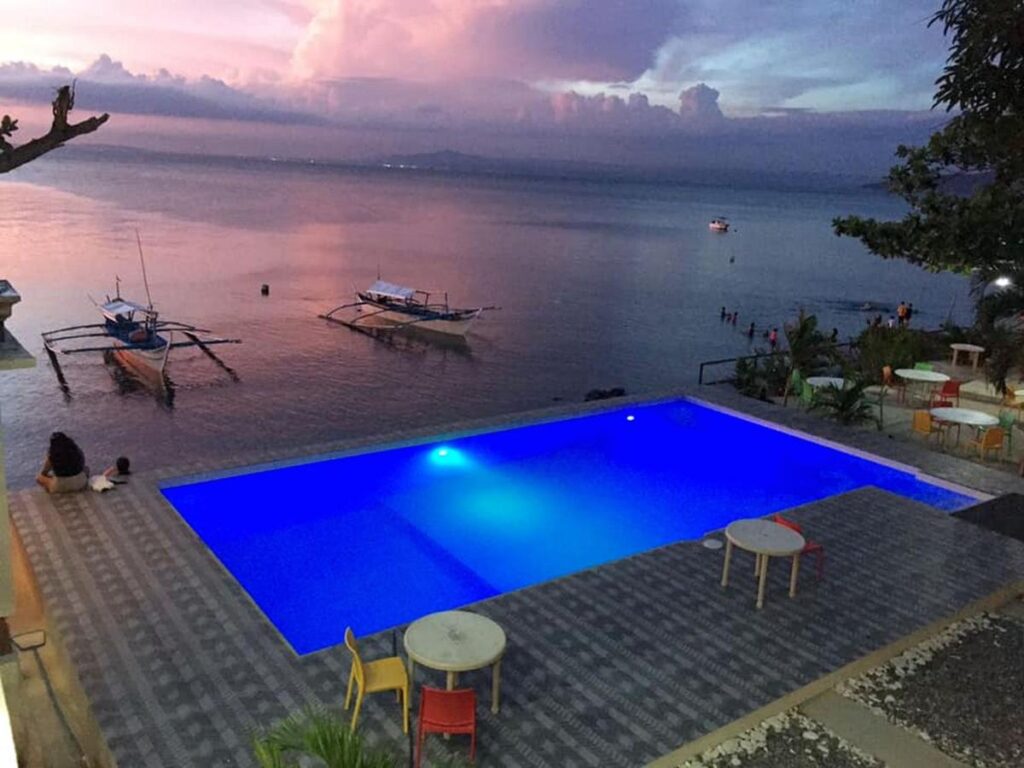
Situated 500 meters from the beach, Bentrina Diving Resort is a 3 star resort with a swimming pool, garden, lounge, restaurant and bar.
Notably, the accommodation also offers Karaoke which will probably either be a deal maker or breaker to you!
All rooms feature an ocean view terrace, ensuite bathroom, TV and aircon.
The staff are very helpful and can help arrange extra activites like fishing, hiking and snorkeling.
5) Blue Ribbon Dive Resort (Coolest Pool)
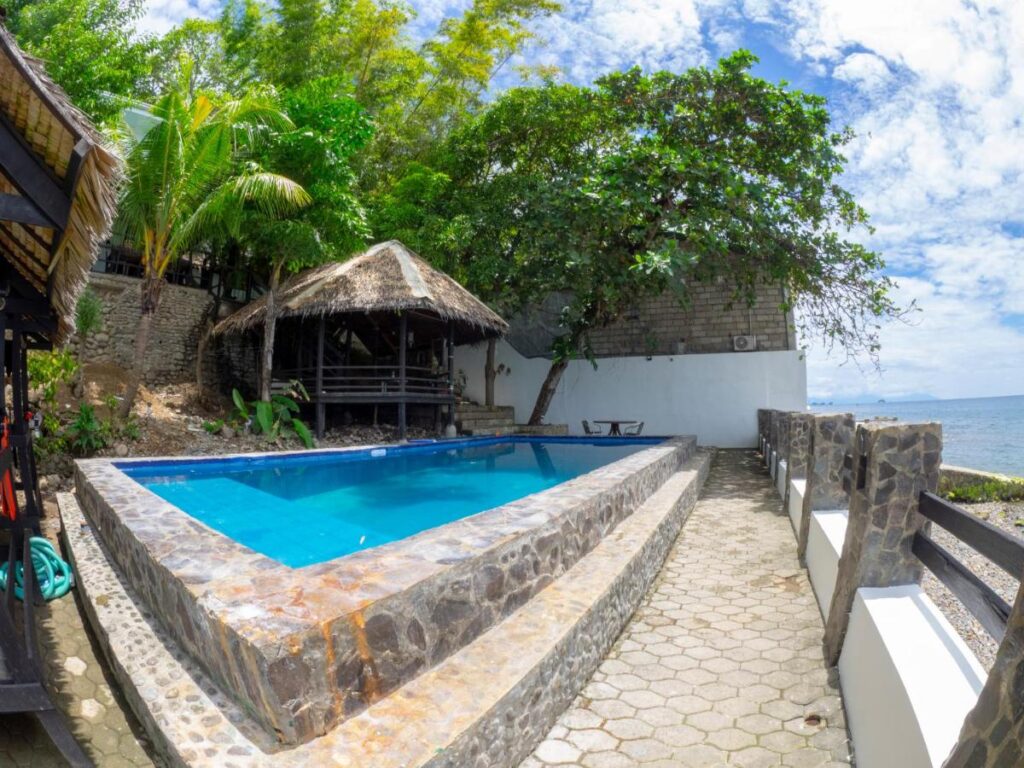
Located just a few meters from the beach, Blue Ribbon Dive Resort has an outdoor swimming pool with epic night time lighting.
There’s also a restaurant, bar garden, terrace, and 24 hour help desk.
Every room has a desk; perfect if you need to bust out some work in the privacy of your own space.
Batangas Diving Season
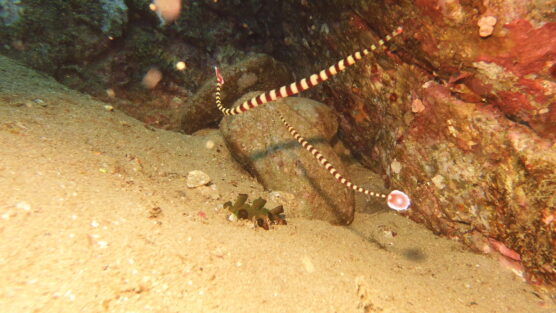
Excellent news! You can scuba dive Anilao all year round as most Batangas dive sites remain easy to dive year on every month. That said:
- November – May is considered the best time to dive as this is dry season and sees the best water visibility. Many consider January – March as the best time to go blackwater diving to see exceptional creature like nautilus.
April and May are typically the most crowded months at resorts so dives and accommodation may be cheaper.
- July – October is monsoon season so water visibility is often reduced. At dive sites like Ligopo & Sombrero Island, currents are likely to be stronger and not suitable for beginners.
Of course, climate change is making seasons and weather patterns harder to predict; throughout my travels, I’ve dived at places where its supposed to be dry season but was raining a lot and where it was supposed to be wet season but was bone dry. The above information is just a rough guide.
Other Things To Do in Anilao
Anilao itself is a sleepy little seaside town (aka Barangay); there is less in the way of nightlife or nearby adventure activites as is the case for many other Philippines dive destinations like Bohol and Siquijor.
However; Anilao is home to my favourite half day trek in the entire Philippines: Mount Gulogod and you can also go windsurfing!
1) Mount Gulugod Trek
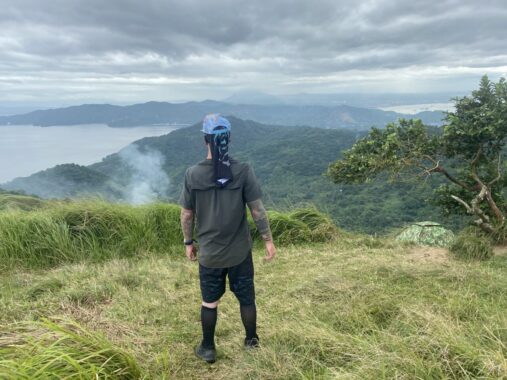
This is a truly awesome half day trek that takes one and a half to two hours in each direction and sees you climb up Mount. Gulugod which offers several spectacular 360 views of the Batangas Bays and nearby islets from various peaks, the highest of which lies at 525 meters above sea level.
You can even see across to nearby island Mindoro (home of Puerto Galera) with its spectacular jagged mountains peaks.
The climb is pretty steep and there’s about a 30 minute part of it towards the end which is sure to break a sweat in even fit people as you climb up ever steepening mountain dirt pathway but it’s oh so worth it.
I recommend going with a guide – you can get one for about 500 Pesos depending on your haggling skills and you need only ask at the reception of wherever you’re staying to be linked up with one – or simply head to the starting point and ask around there.
Many folks like to start this trek in the early hours of the morning at 5:30 am to avoid the heat – although it does mean more people on the trail. Some also choose to camp up here.
It is a truly spectacular and beautiful mini trek and a great way to see the a big part of the Batangas in all their incredibly vibrant and lush glory.
2) Windsurfing
Anilao is one of the few dive destinations in the Philippines where people also go windsurfing. Stare across the bay and you’ll usually spy three or four windsurfers gracefully gliding across the calm waters of the batangas bays.
Although I didn’t windsurfing when I was there, it looked like a fine place for such a thing; with just a few windsurfers there at a time they had so much open water all to themselves amidst scenic and stellar conditions.
Your dive resort can easily help you arrange to go windsurfing – if they don’t provide it themselves, they will link you up with someone who does. Check out the Anilao Windsurfing Facebook page for more info.
You can also go fishing and kayaking!
Getting to Anilao
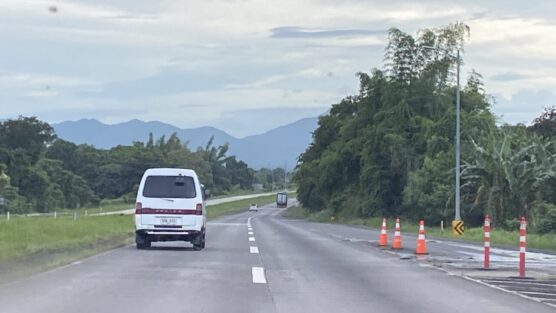
Getting to Anilao, Batangas is super easy! In fact, when it comes to scuba diving near Manila (the Philippines capital and international arrivals hub) nowhere is closer than Anilao, Batangas!
Depending on traffic, from Manila Airport to Anila takes just 90 minutes via taxi and 3 hours via bus. Nice, easy as 1, 2 3! If you want a great taxi contact, hit up Rogato Delos Santos.
Once you’ve finished diving Anilao, it’s just a 90 minute ferry ride to the next island over, Mindoro where more (and different types of) incredible scuba diving await in Puerto Galera, another seaside town with a scuba community.
My Experience Scuba Diving Anilao, Batangas
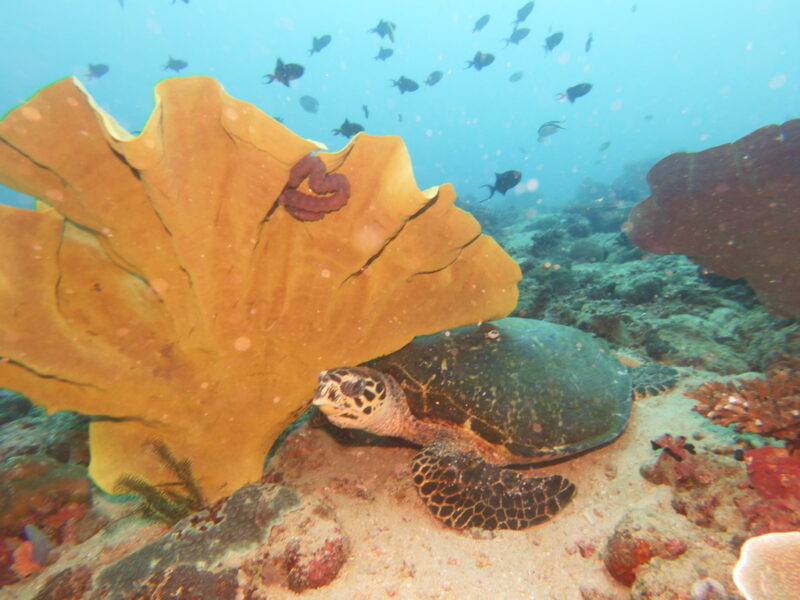
(If you want to skip right to the nitty gritty info of Anilao diving – like the best dive sites, where to stay, when to go and how to get there; click here to dive down to Anilao diving info).
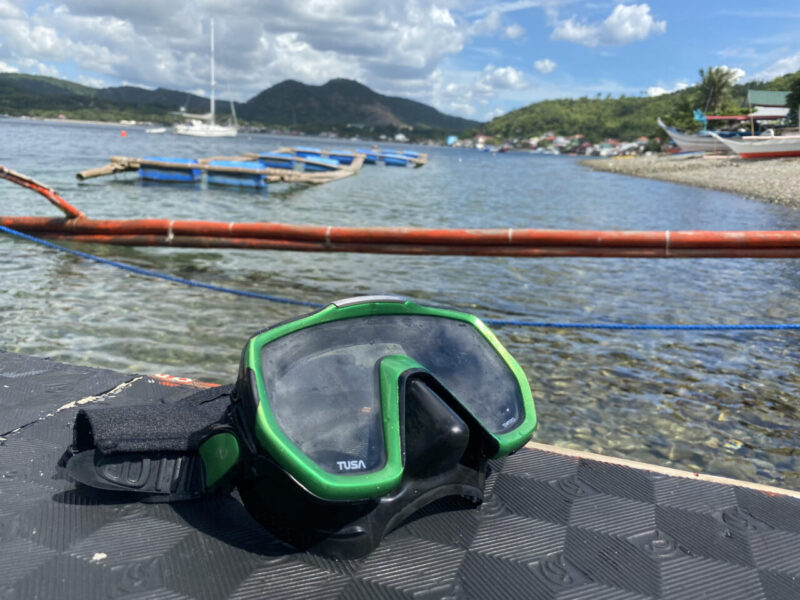
Was November the 8th, 2023 and I had come at last to the end of my third and longest trip in the Philippines yet. Over the last 8 months, I had explored and scuba dived much of the mighty archipelago’s Visayas and Palawan regions whilst using my favourite of them all: Panglao off Bohol as a homebase from which to work on creating new Diving Squad content from such missions.
Now my trip was at an end; I planned to pop back to England for a few weeks to catch up with my parental units and family doggos before heading onwards to Thailand – but first I had one last Philippines dive destination on my list; Anilao in Batangas Province.
Located on south Luzon, Anilao actually offers the closest scuba diving to Manila from which I would be flying out of – but first had to fly into from Panglao my beloved homebase and a hard place to leave!
But leave Panglao I did and when I arrived at Manila Airport, I next caught a 90 minute taxi ride with Rogato Delos Santos, a talented taxi driver and also keen scuba diver himself.
The journey actually became most scenic once we were out of Manila city as we passed with spectacular jungle covered hills and mountains looming in the distance of a highway that whilst busy was practically fringed by tropical jungle and rice paddies; all so typical of the beautiful Philippines.
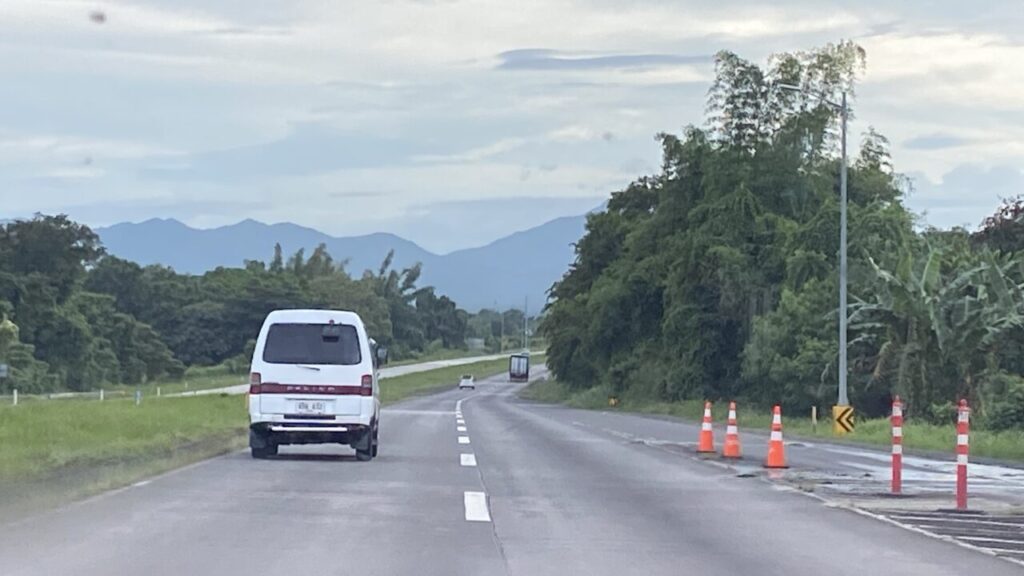
It was early evening when I arrived at Anilao Scuba Dive Centre; a small dive resort in Anilao, whom I had chosen because of how affordable their accommodation and diving rates were; notably only half the cost compared to other Anilao dive centres. (For some reason Anilao diving rates are higher than other Philippines destinations).
I prefer meeting other backpacker diver types whilst saving money for booze and weed, hence opting for the cheapest option and I liked Anilao Scuba Dive Center a lot. It was great for meeting other travellers and situated along the beach, offered incredible views of Balayan Bay, the distant rolling forested hills on its other side tearing a soft line into the red evening sky.
There was a little resto-bar from which to soak in the views and I did for a while, befriending a most memorable person indeed – their name I forget but they were a true scholar and a talented traveller.
I then retired to my room, which was most spectacularly basic indeed; no more than a bed in an otherwise totally empty but very large room without so much as the slightest desk – but there was an ac and basic ensuite toilet and for how cheap and spacious it was I didn’t mind an ounce.
A belly full of rice and beer, I crashed down onto the bed and immediately slept; probably snoring and drooling all over the pillows as I rested in preparation for tomorrow’s first day of Anilao diving.
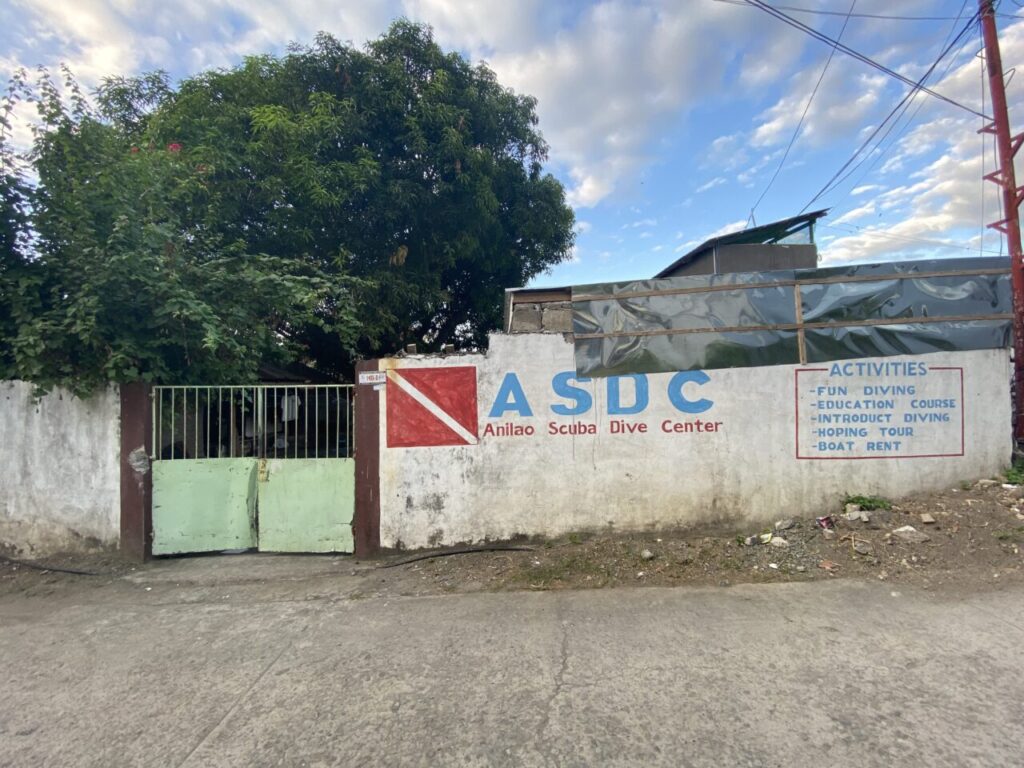
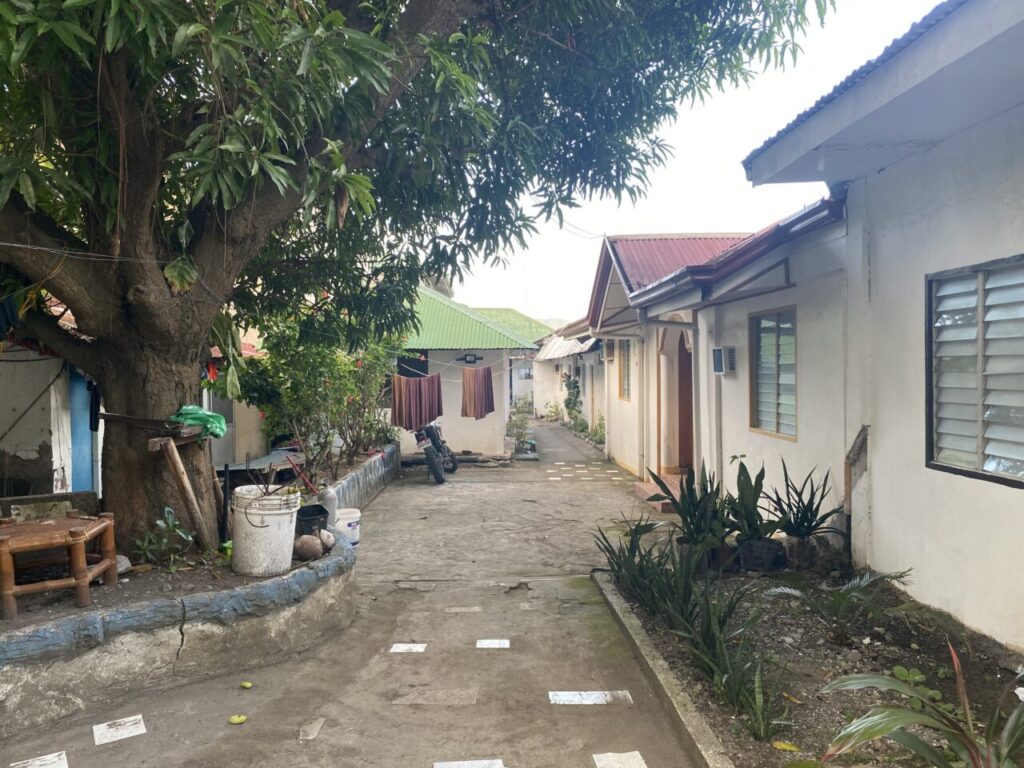
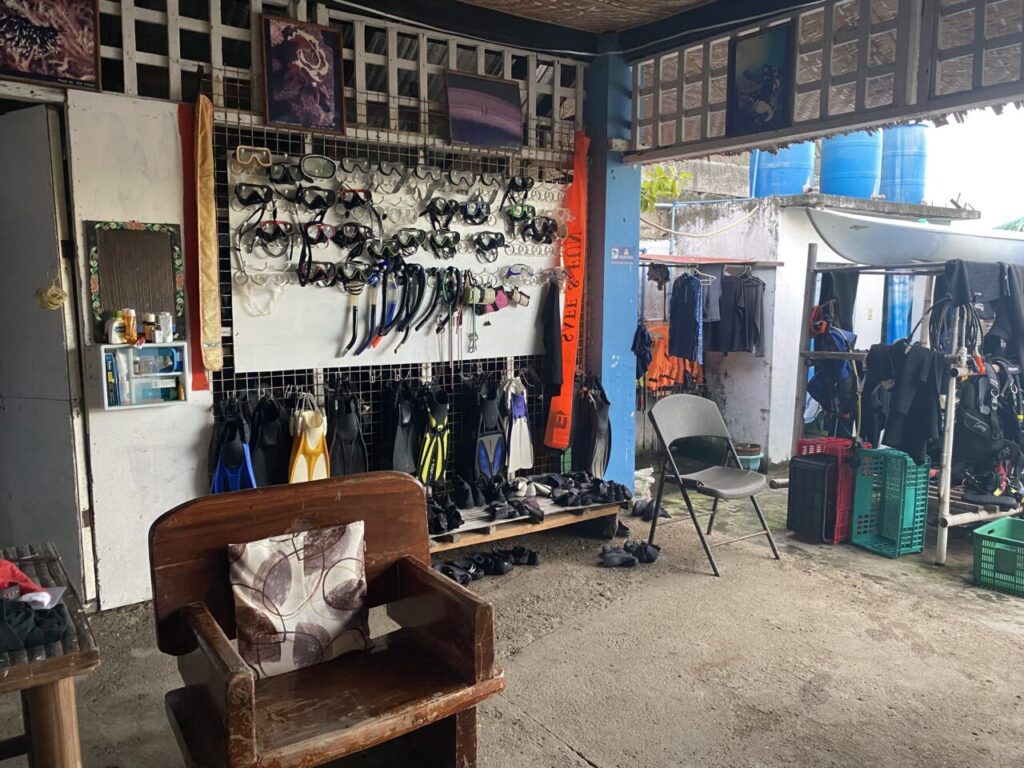
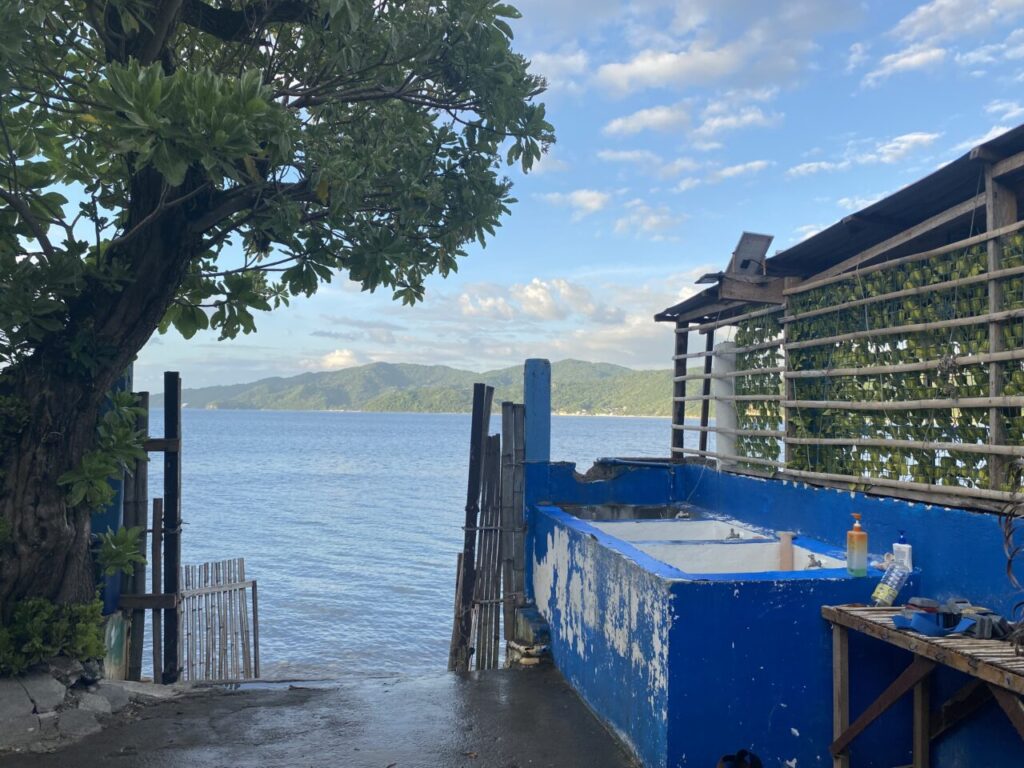
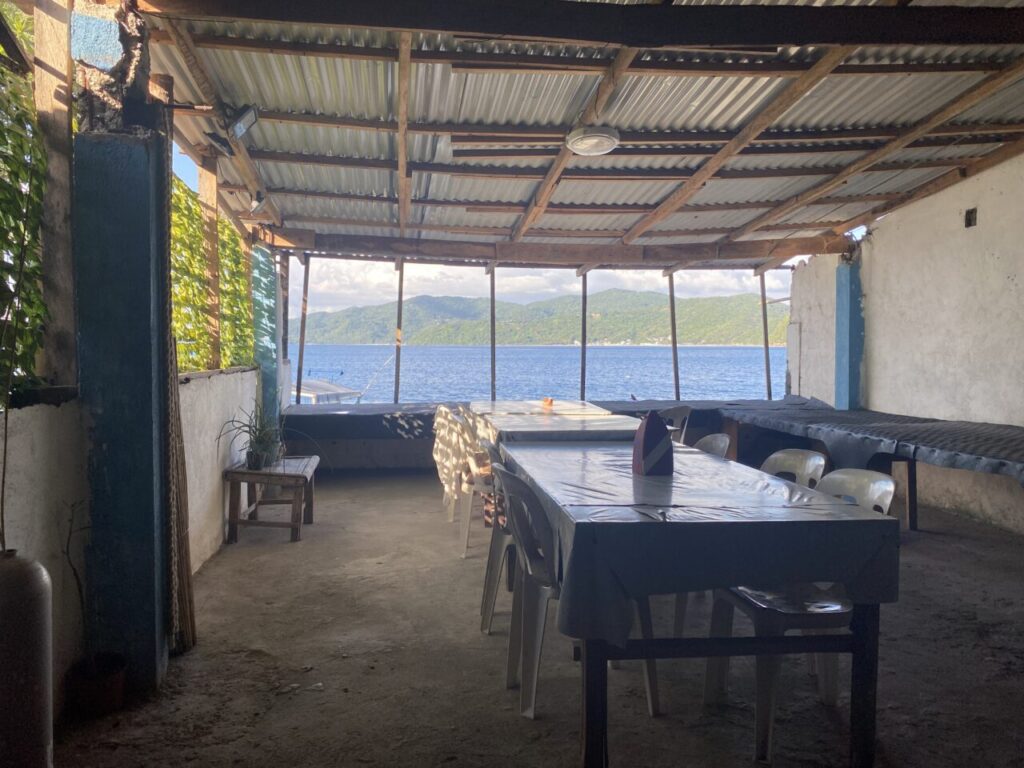
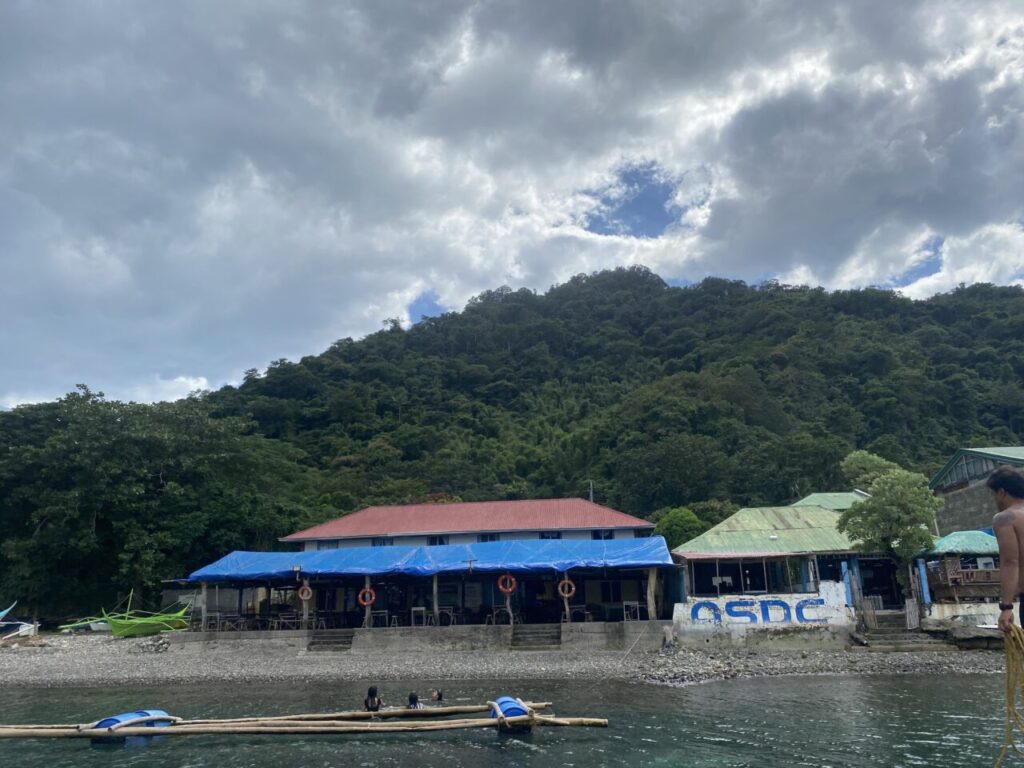
I awoke and emerged from my tin roofed dwellings to behold a sky bronzed by the early morning sun. Some 50 yards ahead, I could hear the water’s edge of the bay lazily slurping up the little yellow beach that the Anilao Scuba Dive Centre was situated along.
I helped myself to the complimentary buffet-breko, necked a couple coffees and with a spritely and most merry bounce in my gait hopped, with a click of my dive boots, along and across the rickety little wooden ladder from the edge of the beach up onto the awaiting Bangka dhoni (traditional style Philippines skiff boat) which was already loaded with dive gear and tanks.
It was a beautiful day and the calm blue sky was reflected seamlessly in the serene salty waters of the bay as we began the fifty minute boat ride to the first dive site of the day: Twin Rocks.
Flung a little way out to sea and able to gaze back to the coast of South Luzon we were met with impressive stone cliffs and elevated plateaus of land; all covered in stiff dense jungle. The tip of Mount Gulugod; the highest peak on the peinnsular momentarily jutted out before being obscured again by the rolling green forested hills that led up to it.
We reached Twin Rocks and dove on in. There were a great many reef fish and all kindsa critters beneath those tropical waters; frogfish, pipefish, seahorses – and countless nudibranch; tiny and large, round and flat and in every colour I know.
Twin Rocks is named after the two coral coated pinnacles lying within the centre of this dive site. Amidst the nooks and crannies, hide and crawl so many of the nudibranch and crustaceans that macro diving is known for. Coral coated boulders and clumps of soft coral garden fringe the two pinnacles and here also are many more critters like pipefish and seahorse.
Plentiful though the coral was, in places it was badly damaged; this was partly due to the 2020 typhoons but also doubtless from over-diving. At Batangas, I saw countless hordes of Olympus TG6 wielding “macro photographers” getting super close and often touching and even lying on the coral to get photos of those tiny creatures…not good.
Next; we dived Cathedral which was also occupied by many more critters and reef fish as well as a cruising hawksbill turtle – this time the reef was sprawled across the many boulders littering the seabed; two enormous boulders towards the northern periphery of the dive site loomed above us and in between them was a stone cross that had been sunk several decades ago.

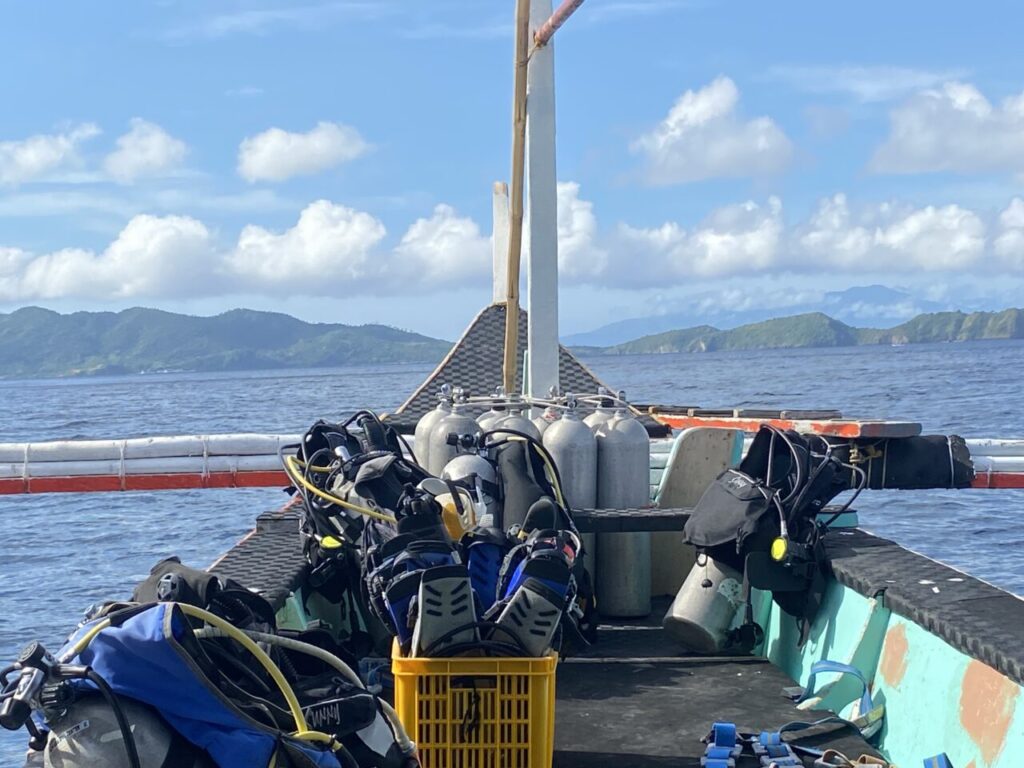
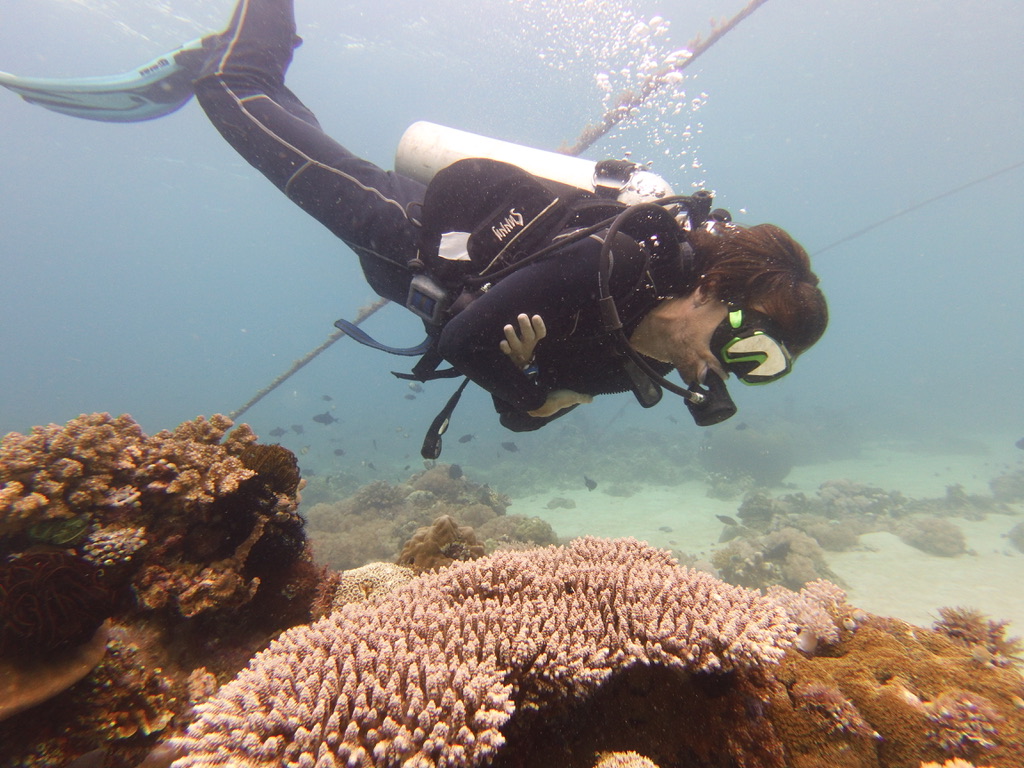
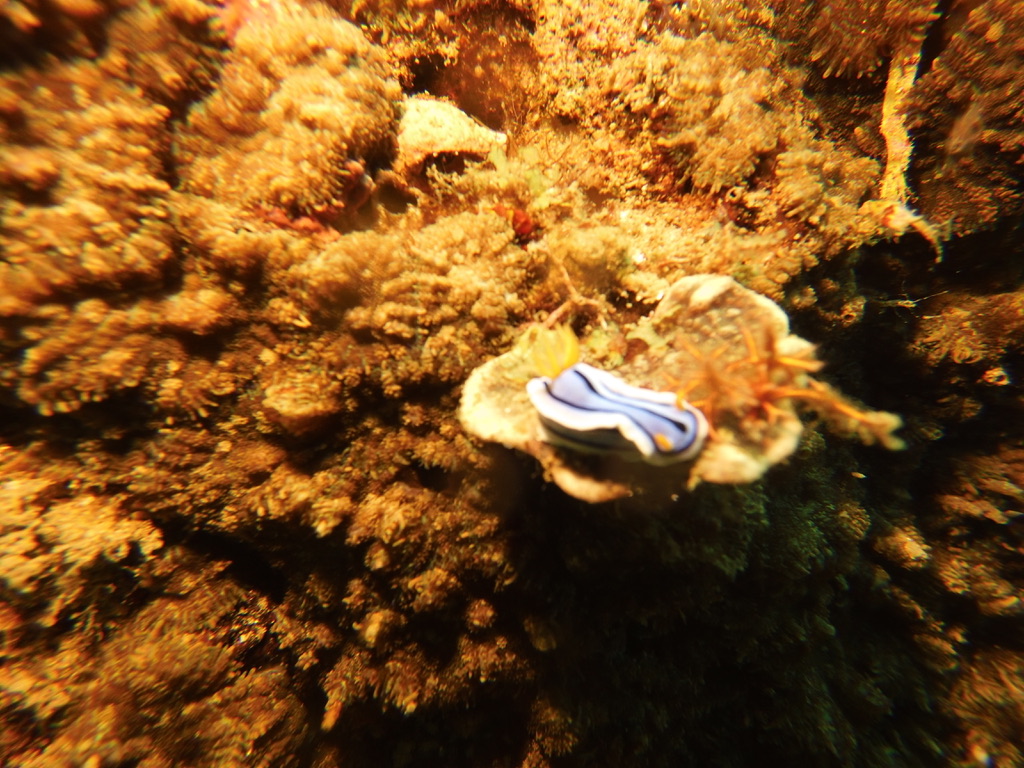
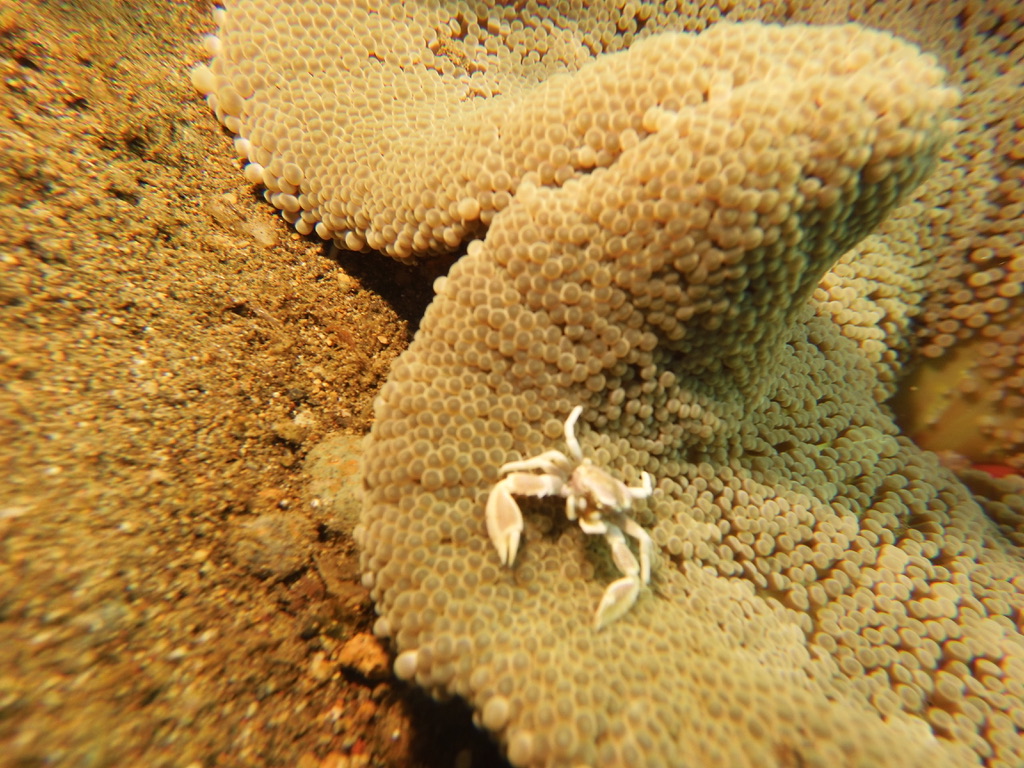
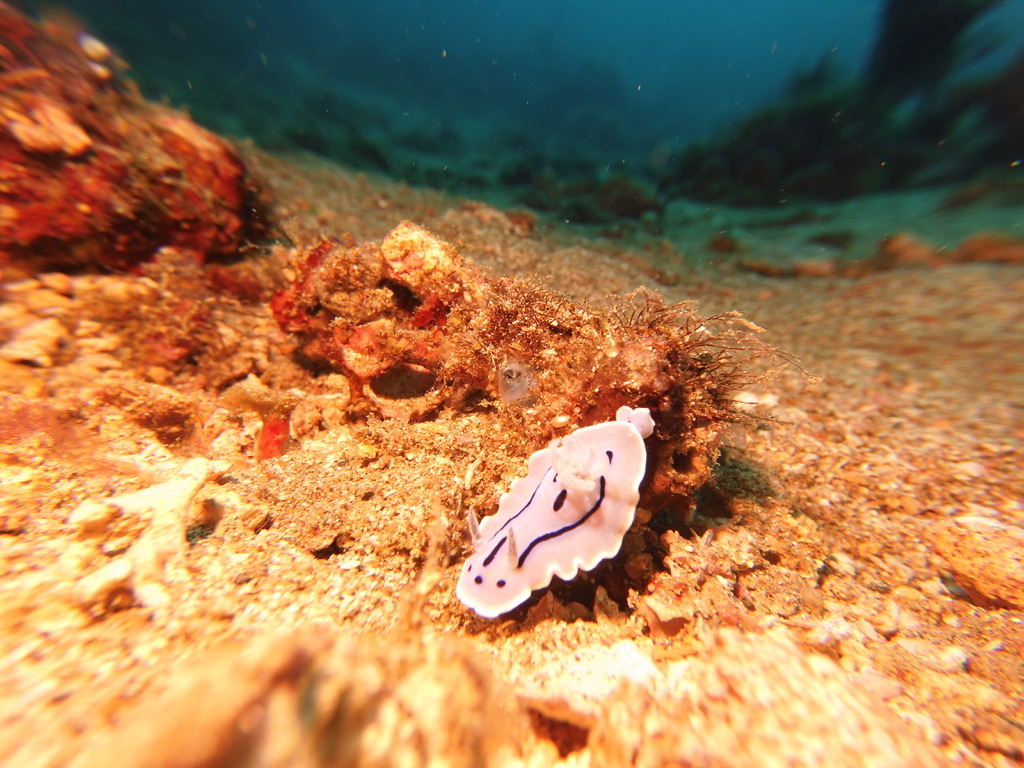
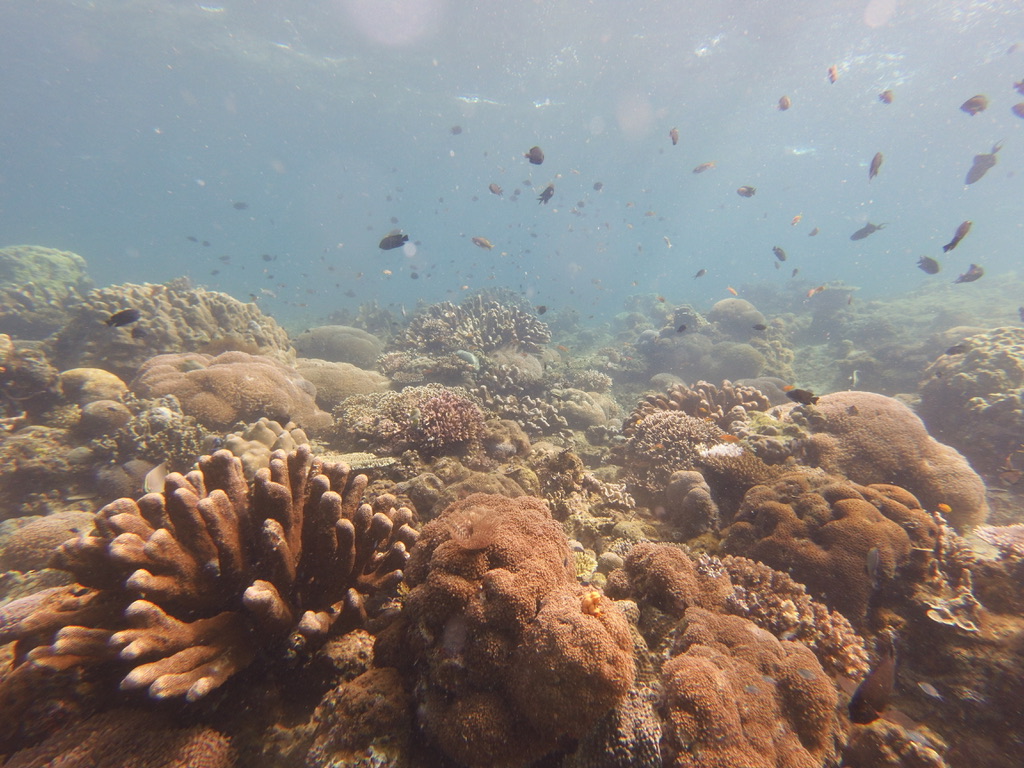
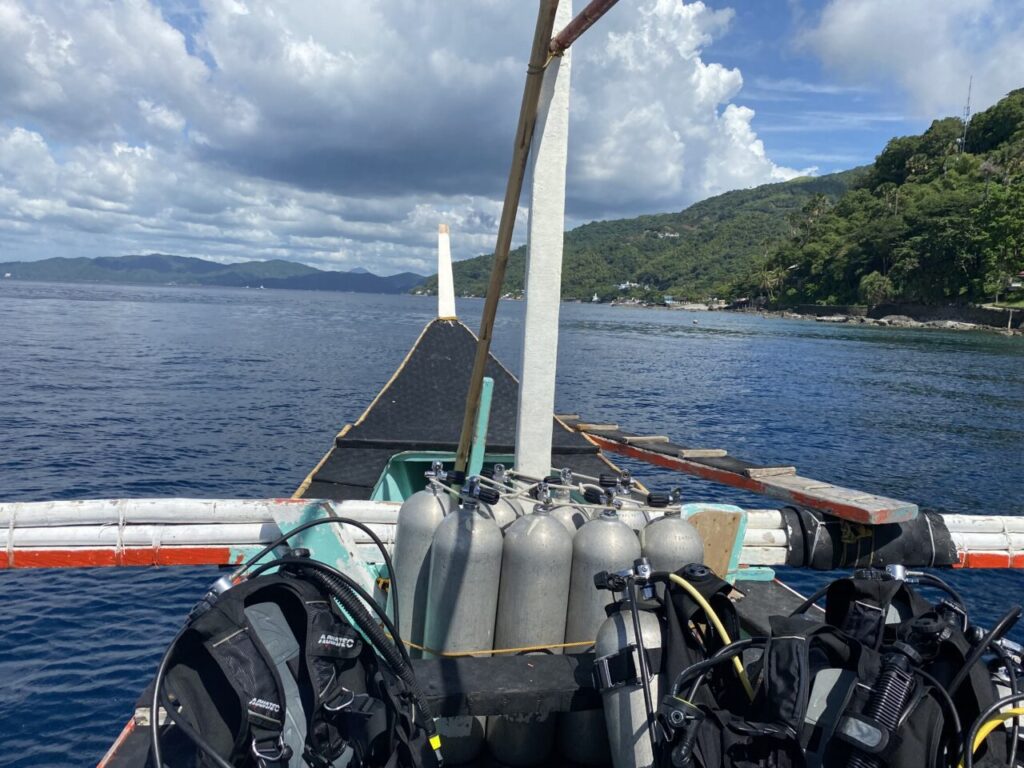
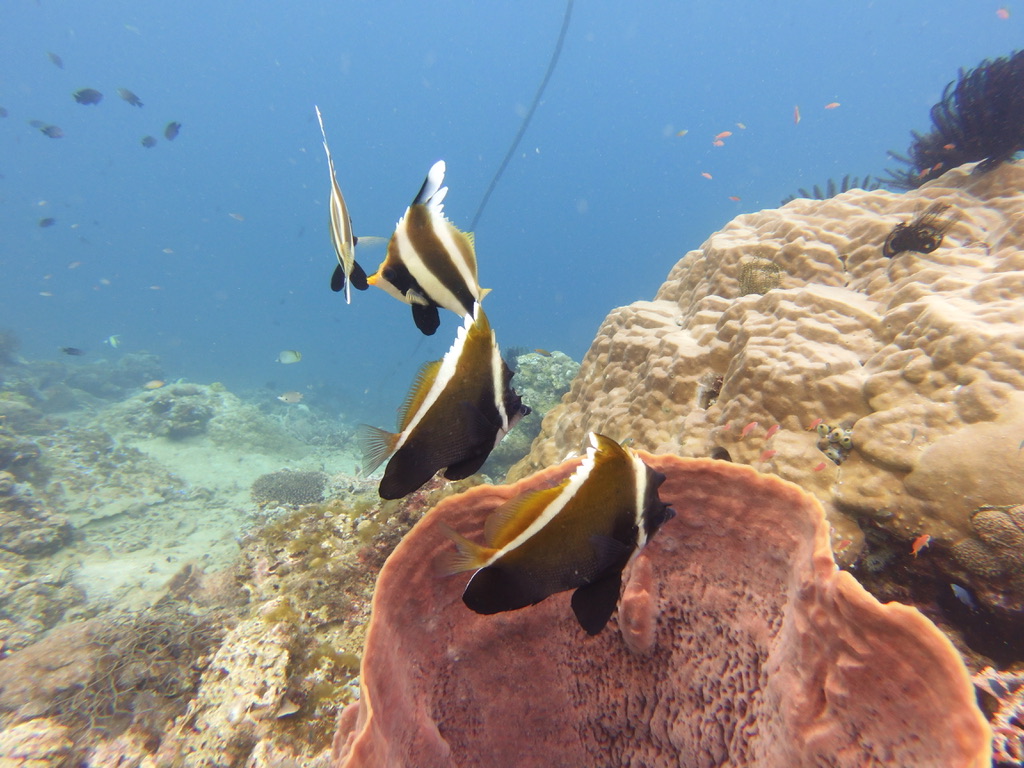
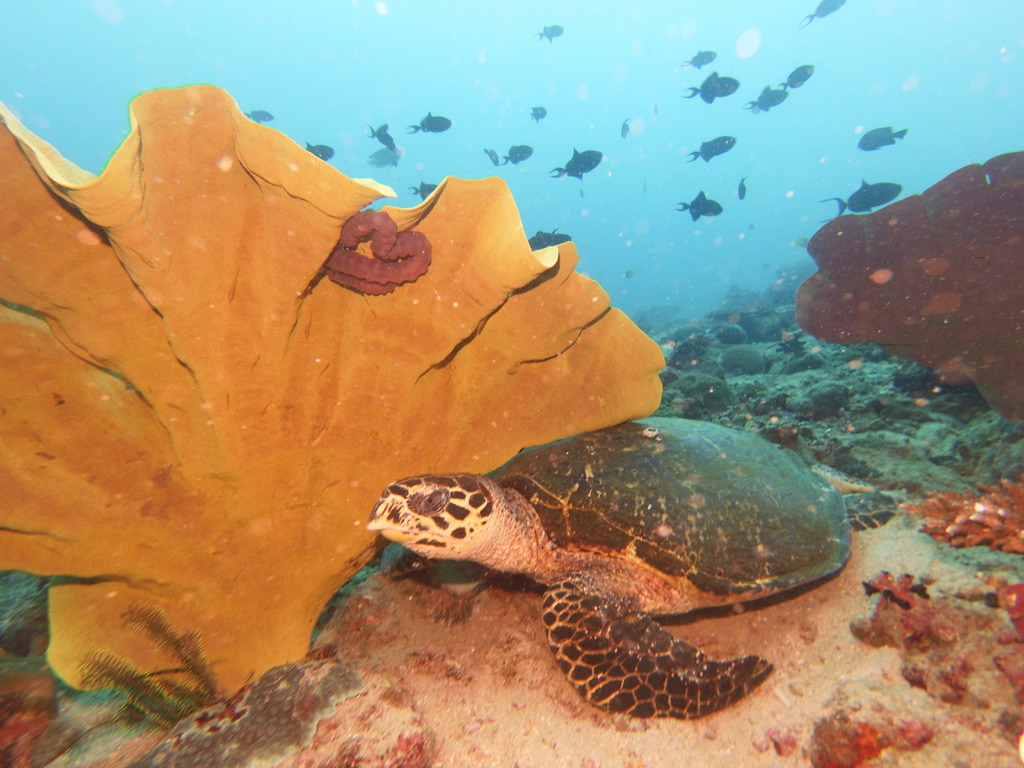
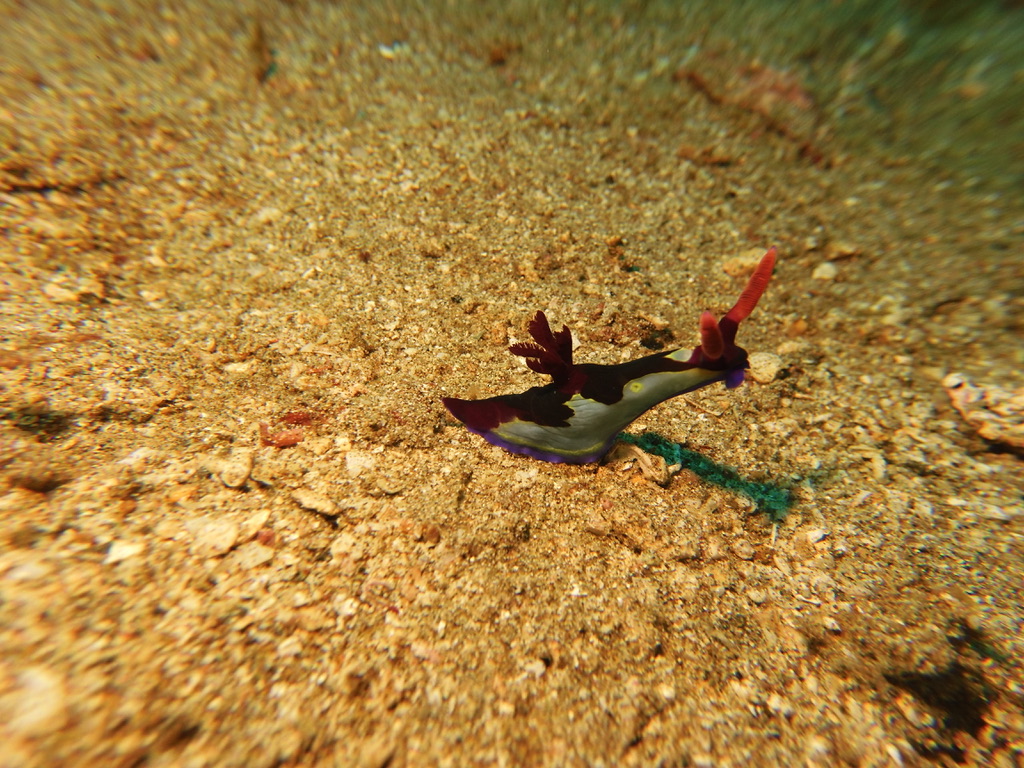
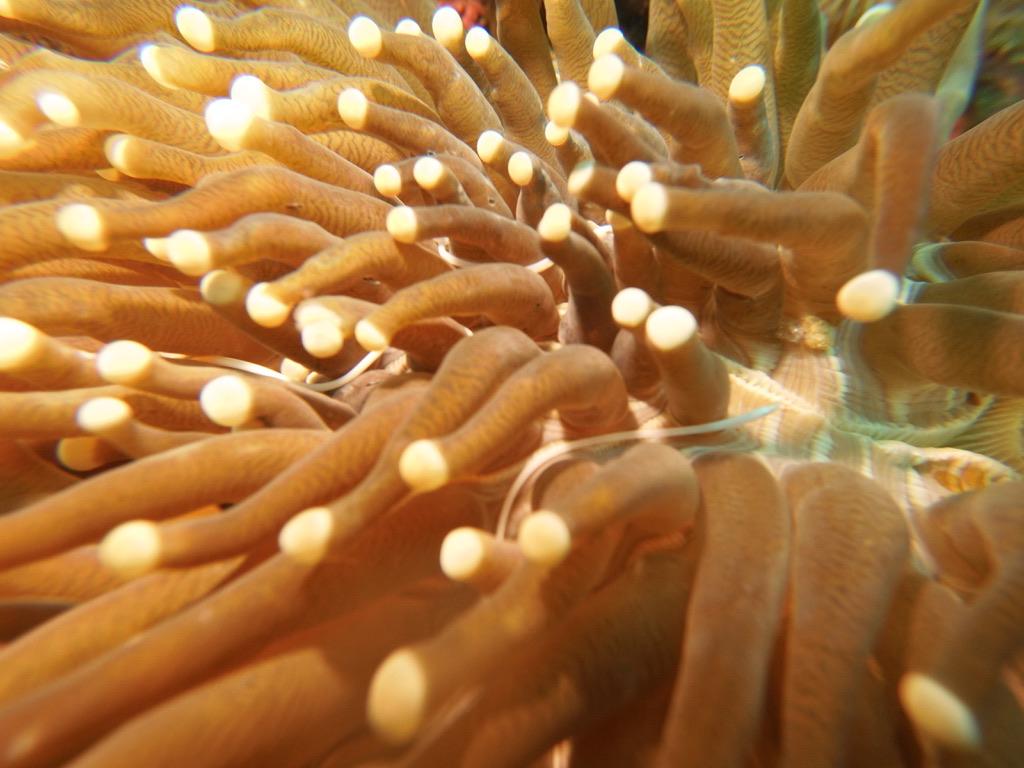
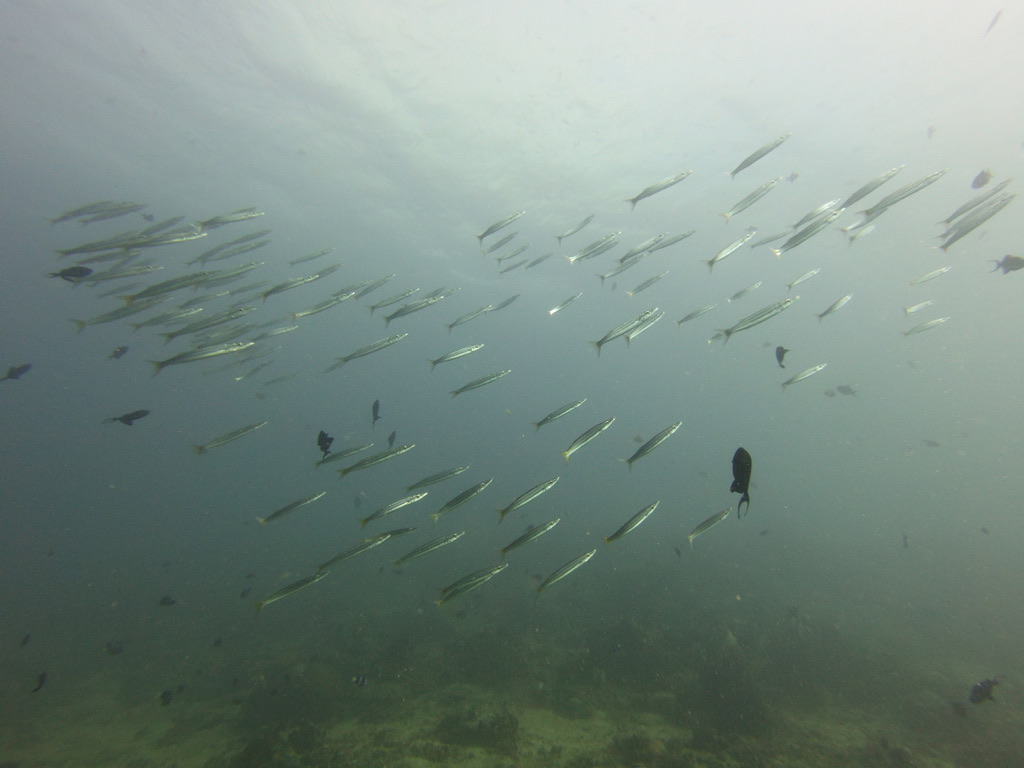
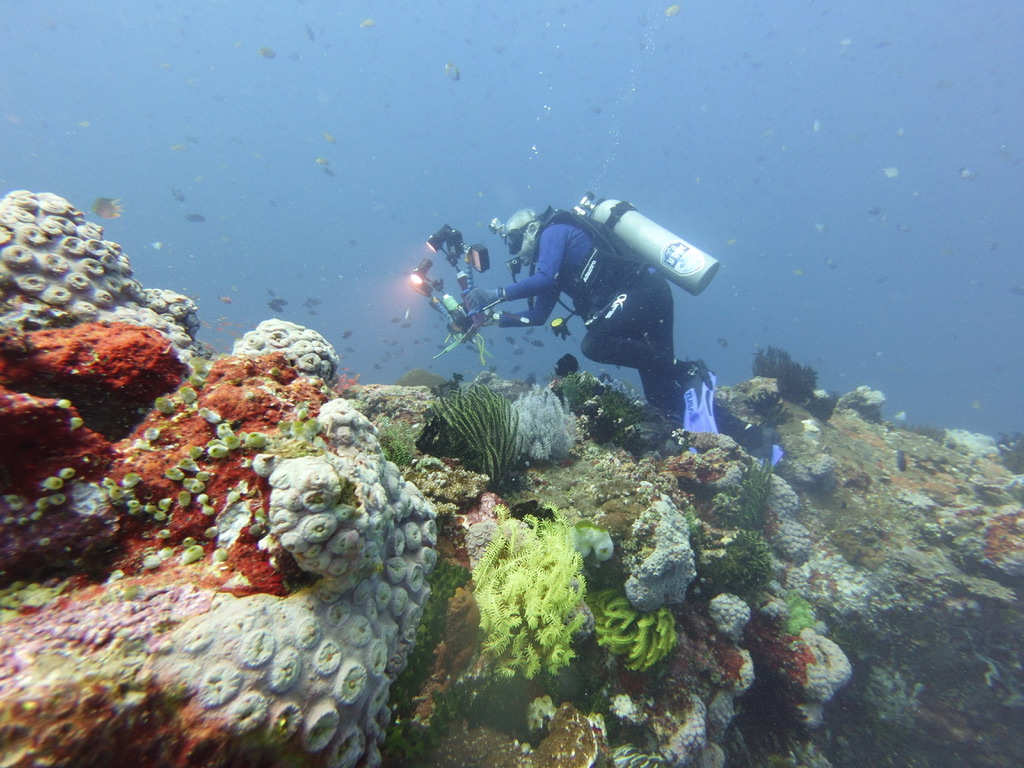
Then that evening I went on a night dive to Secret Bay where I beheld with my torch many weird squid, crustaceans, ghostly fish and other crittery things.
It was especially great for seeing octopus, cuttlefish and squid; we witnessed all sorts of behaviour including colour changing, mating, shelter building.
At one point, a tiny squid hovered just a foot away from my face before extending its two tentacles at an impossibly long stretch to snatch up a tiny fish in front of it which it then proceeded to ravenously devour down to the bone.
This was one of the coolest night dives I’d ever been on (second only to some of the night dives I went on in the Maldives), however there was an even cooler night dive experience to come…
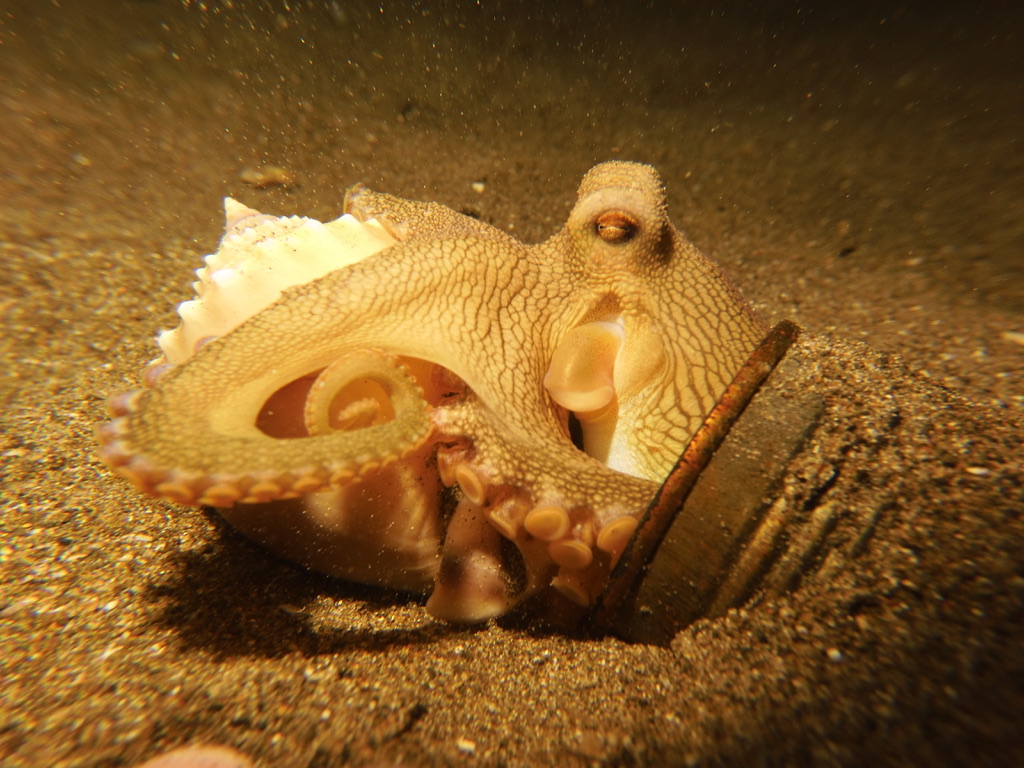
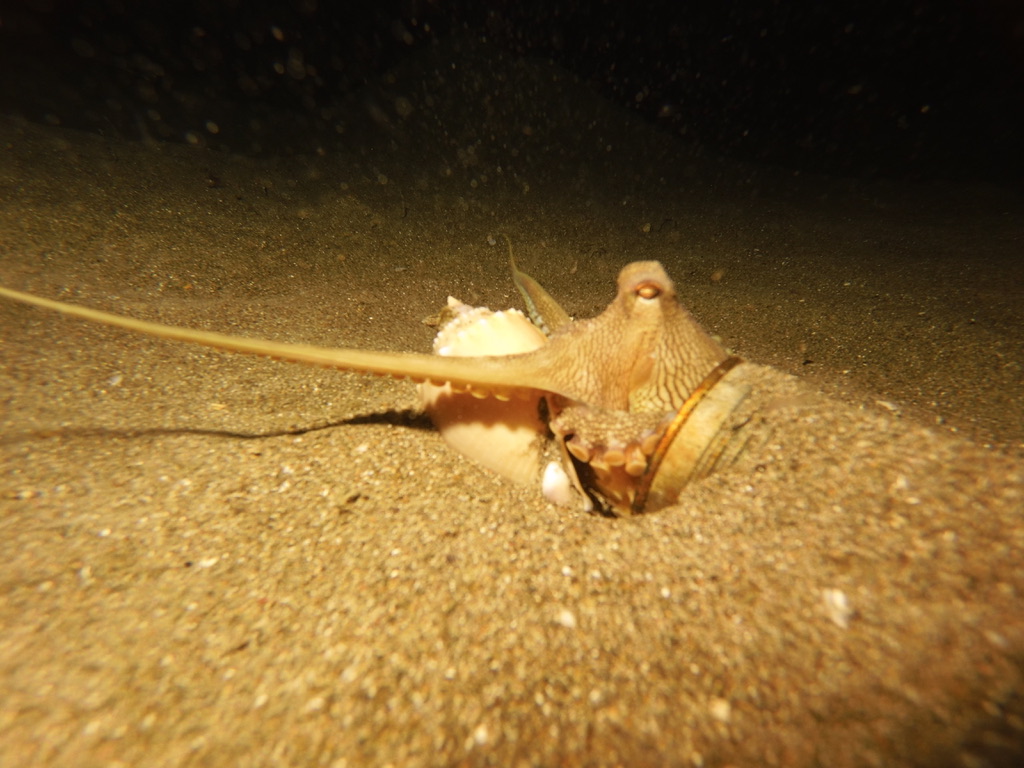
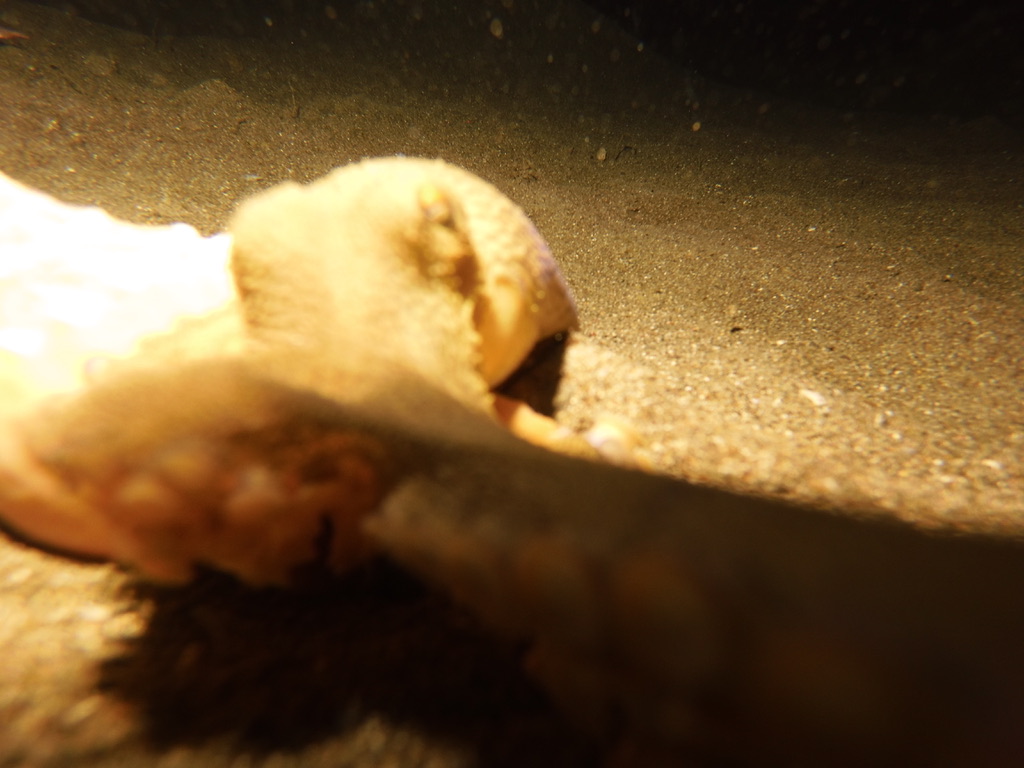
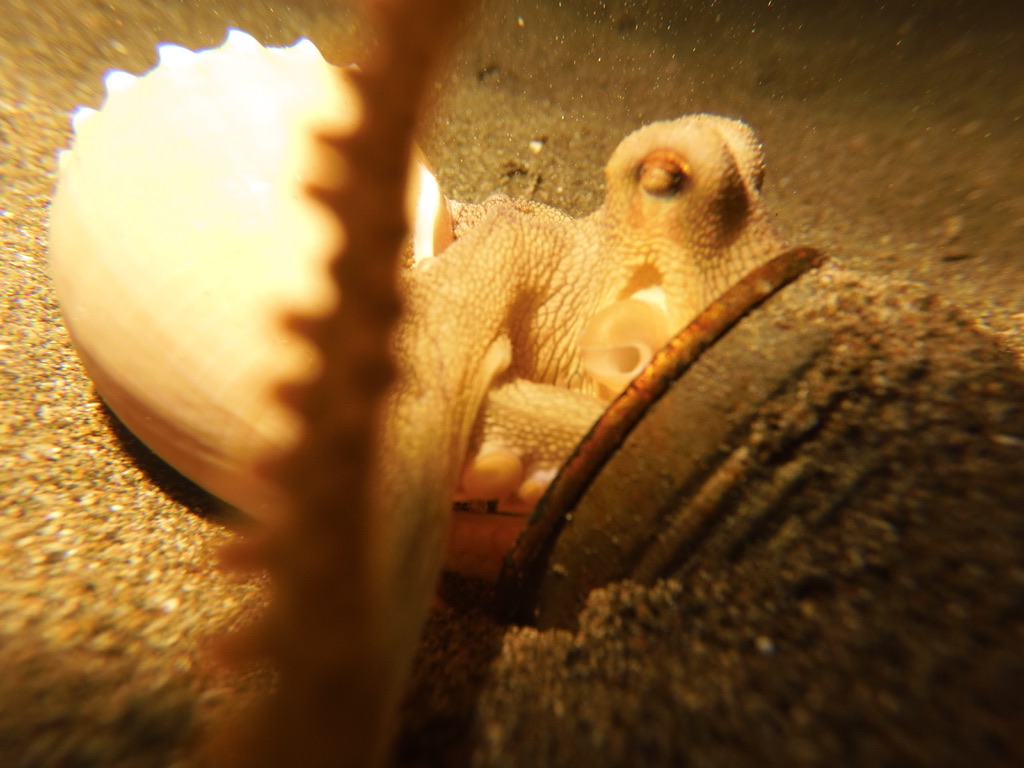
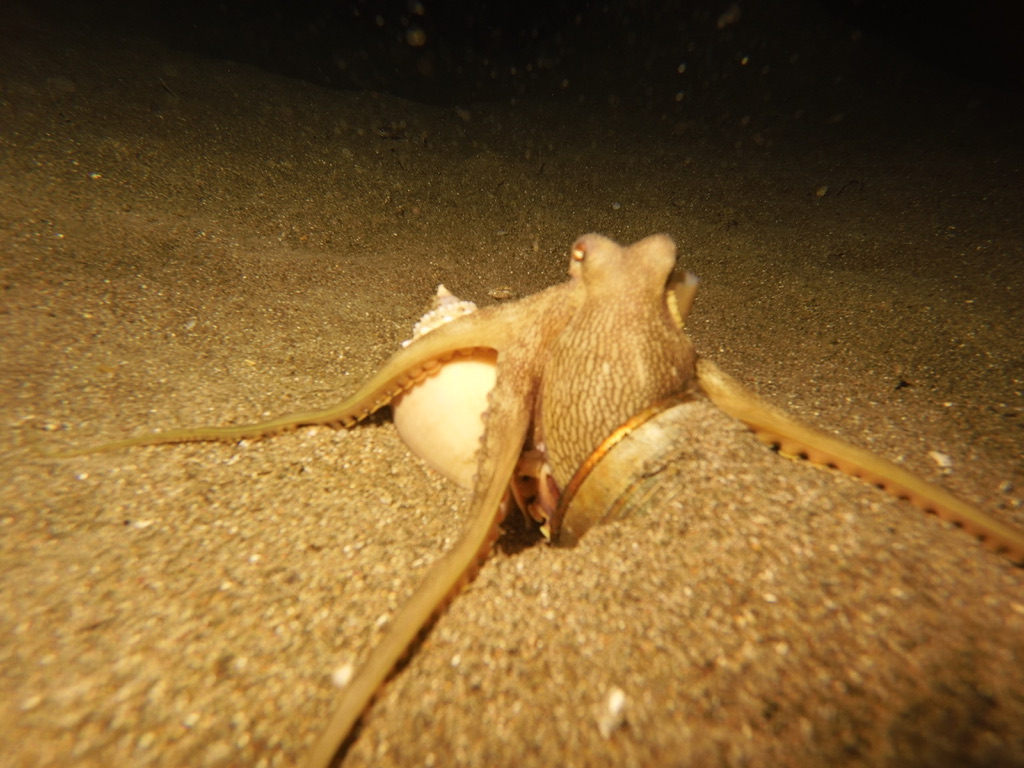
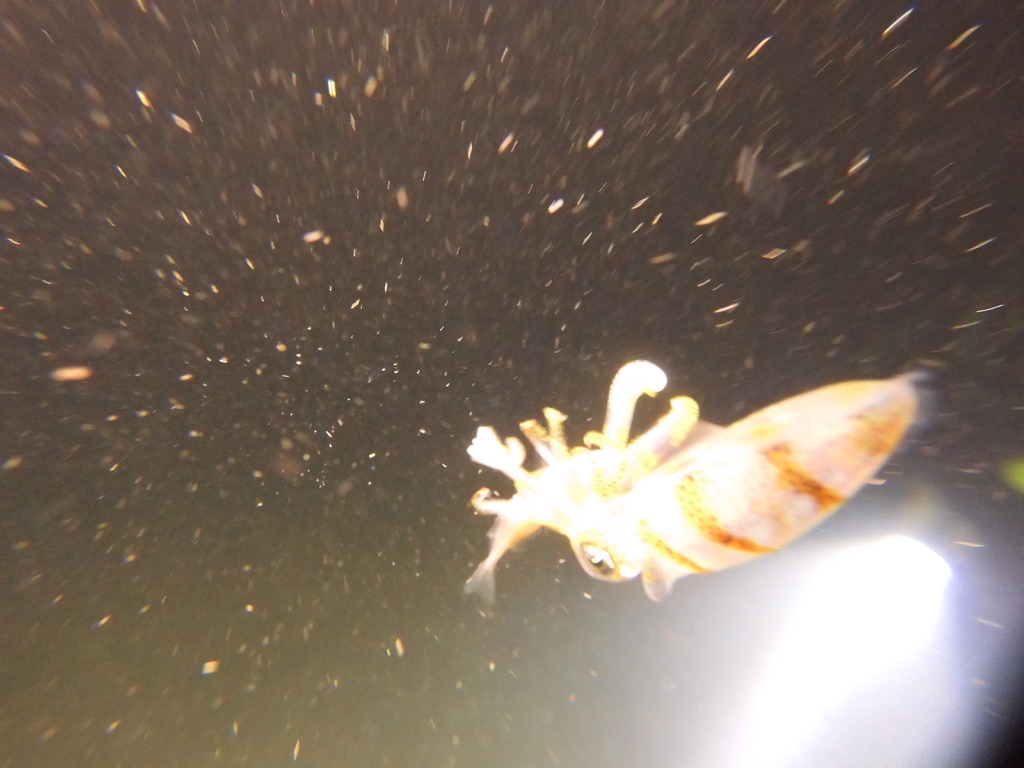
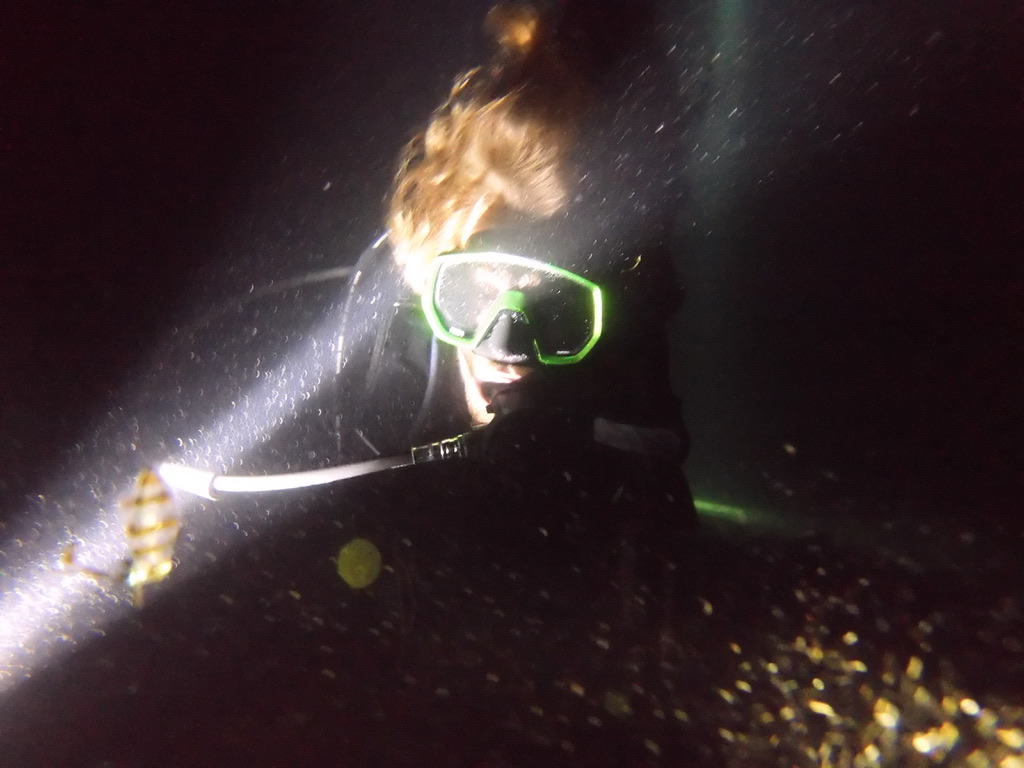
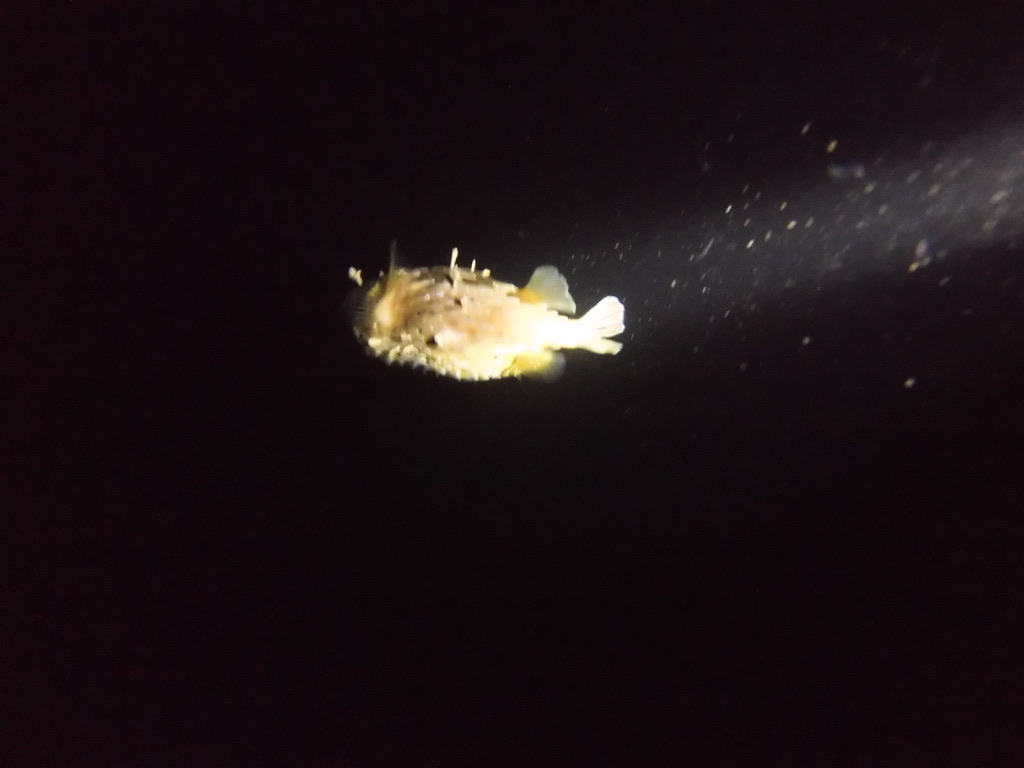
That very next day I went diving again. This time we spent two dives around Ligopo Island and beheld an epic ocean floor of orange, purple and grey-green from the amassed armies of soft coral and sea anemones covering the seabed. Intricate and healthy staghorn corals crowned a sloping reef and clouds of red toothed trigger fish and wrasse swirled above them.
Amazingly there were even more types of nudibranch here; something which delighted the group of Korean divers who had travelled here in pursuit of photographing specific species they had in their nudibranch checklists, being the diehard nudi-fans that they were.
There were a couple of pygmy sea horses knocking about on some seafans; tiny porcelain crabs and juvenile white eel like fish hiding amidst the tentacles of sea anemone, frogfish and scorpionfish, shrimps, nudis, nudis and more nudis.
It was all in a mild current, so if one were to allow; they could be gently carried along on it, over the scores of rolling purple soft coral and anemone, gazing away from the seabed to behold the countless red toothed triggerfish everywhere and then have their view momentarily obscured by a hawksbill turtle rising for a breath of fresh air between devouring the soft coral.
Kind of like what happened to me in the below video:
After the morning dives, I grabbed a tricycle ride to Anilao Diving and Resorts: one of the few Batangas dive resorts, whom even in low season (which it was at the time) offer blackwater diving.
Blackwater diving is a unique type of night diving experience and one I’d wanted to try since 2020, after first hearing about it in Puerto Galera but being unable to do it or much else at all due to the covid lockdowns.
Whereas regular night dives take place in fairly shallow waters at around 33 feet or less with just a dive torch, blackwater diving involves going out to much deeper waters and suspending a 40 meter rig outfitted with powerful lights into the abyss to attract all manner of weird and wonderful beings of the night.
So with a newly made friend, Hugo, I’d dived with that morning, we arrived, signed up for a bout of blackwater diving – more expensive than regular fun dives you must understand but cheaper when arranged in a pair as we was, and went on my way for the remainder of the day.
We returned at nightfall and after a rather thorough dive briefing of what was to occur; we climbed aboard the yacht with our dive gear and made outwards from the beach; onwards to open waters.
Fifteen minutes later and I was watching curiously as the boat crew lowered the thirty meter long rig outfitted with powerful LED lights into the water which it disappeared into, swallowed up by the blackness in no time at all.
We waited ten minutes for the lights to do their thang and attract them creatures, then dived on in; descending down to 99ft / 30 meters.
It was strange; staying close to the rig we were enveloped in bright light; but it only penetrated the abyss for a few meters all round before being met with a hard wall of black darkness on every angle, from which all manner of things and shapes appeared or skirted round the edges of.
It didn’t take long to realise that the common denominator was these huge translucent worm like beings that could be anywhere from a few inches long to as long as an arm. They drifted through the water harmlessly all around us like transparent leaves on a breeze in slow-motion, at times appearing out of nowhere to float within inches of one’s body or mask.
Amidst the other various jellyfish and see-through shrimp, were strange; night-timey fish with tranluscent bodies and green seahorses beating through the water in search of prey.
At one point, a massive school of medium sized squid that must have been a hundred or so strong went shooting past, darting off in all directions through the night.
Little crustaceans – some full grown, many larval swam through the water, beating tiny legs and frills against it; preying on eachother and in turn preyed upon by the tiny octopi and squid stealthily shooting through the black waters. It was a truly otherworldly experience.
The next day was to be the last of my 8 month trip in the Philippines. I was sad to leave yet ready; we Alexes never stay put; we are like scattered ashes of hazelnut dust on the dawn breeze.
For this closing of a chapter, this ending of a mini-life, this wrapping of a mind-frame and a world view and a reality, I wanted to see as much of the country in one go as possible.
So I made my way to the base of Mount Gulugod and hired a local guide boy; whom I called boy and ended up tipping outrageously well because he was a good lad and a fine trekker, fitter than I at only the tender age he was as he led me up the way.
We started on a gradual pathway which soon steepened into an upwards hill of cement before that cement began to crack and rupture as we climbed it further, before trickling away to be replaced by dirt and rock and hard climbing through jungle that opened out into rice paddy that closed back into jungle and then out into rice paddy and back into jungle again.
We passed small jungle villages of tiny tin houses clustered in rows of no more than two for there was no space and we squeezed between the tiny tight alleyways of them, ignoring barking dogs and playing children as we continued our ascent.
After about 90 minutes we reached the summit of Mount Gulugod, where I was met with the spectacular sight of the many green jungle coated peninsulas, hills, bays and islets of the Batangas and even in the distance the dramatic mountainous silhouette of Mindoro Island, the next island down from Luzon and seventh largest in the Philippines.
Strange for me to see Mindoro, knowing that it was on this island lay Puerto Galera, where I’d been three years ago during 2020; back then it had supposed to be the first step on the journey I only found myself now completing at the end of 2023.
In every direction I gazed, I was met with ocean or jungle or jungle and ocean and islands and not a sound fell upon my ears other than the gentle breeze rippling through the short grass and the occasional groan of a nearby carabao munching away on some grass.
I surveyed it all in for a long while, marching from viewpoint to viewpoint with boy; the cool ocean mountain breeze swirling around us. I stopped atop the highest point and breathed deeply, closing my eyes for a moment and then snapped them back open, bellowing “Until next time Philippines”!
I roared with laughter, slapped my thigh; tore off my scuba mask and went tearing off back down the mountain, down the winding hills and cement road, down into a taxi that took me to Manila Airport which I flew up and out of in a plane; for now leaving the Philippines; for me still one of the coolest country’s in the entire world. I’ll be back.

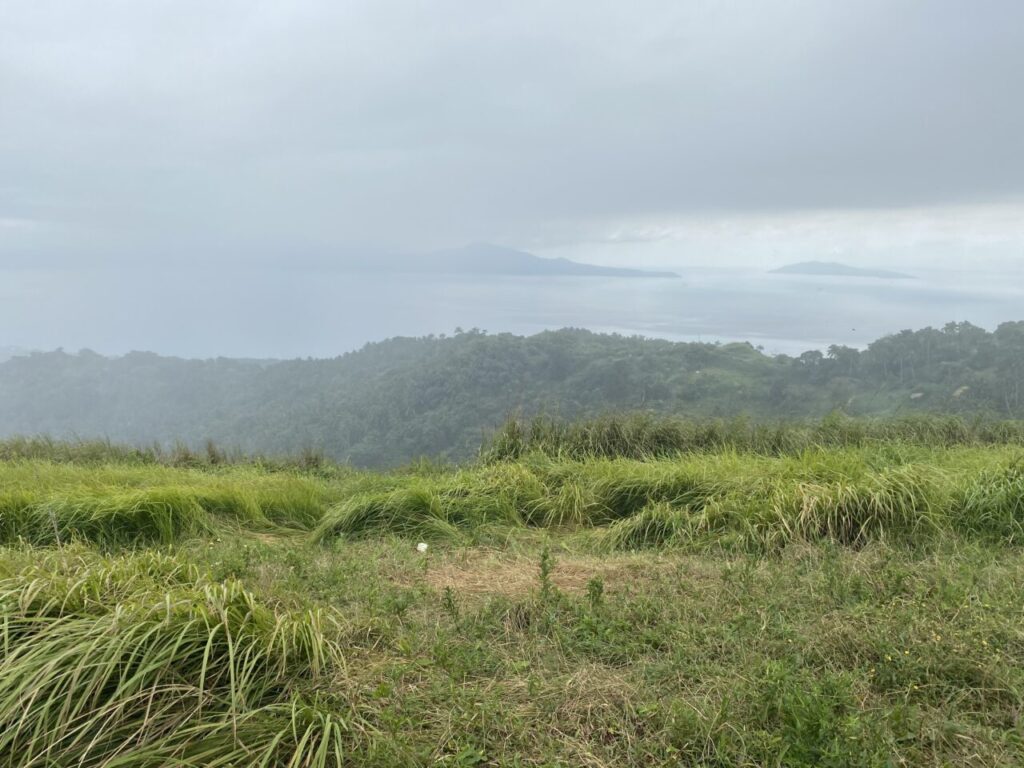
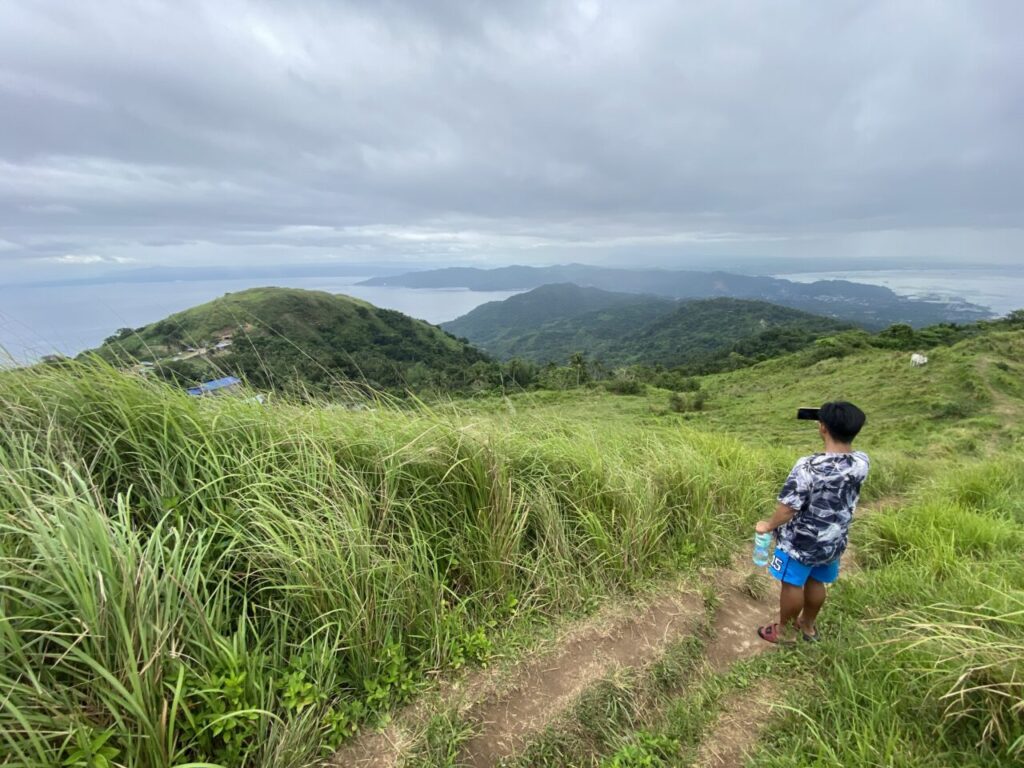
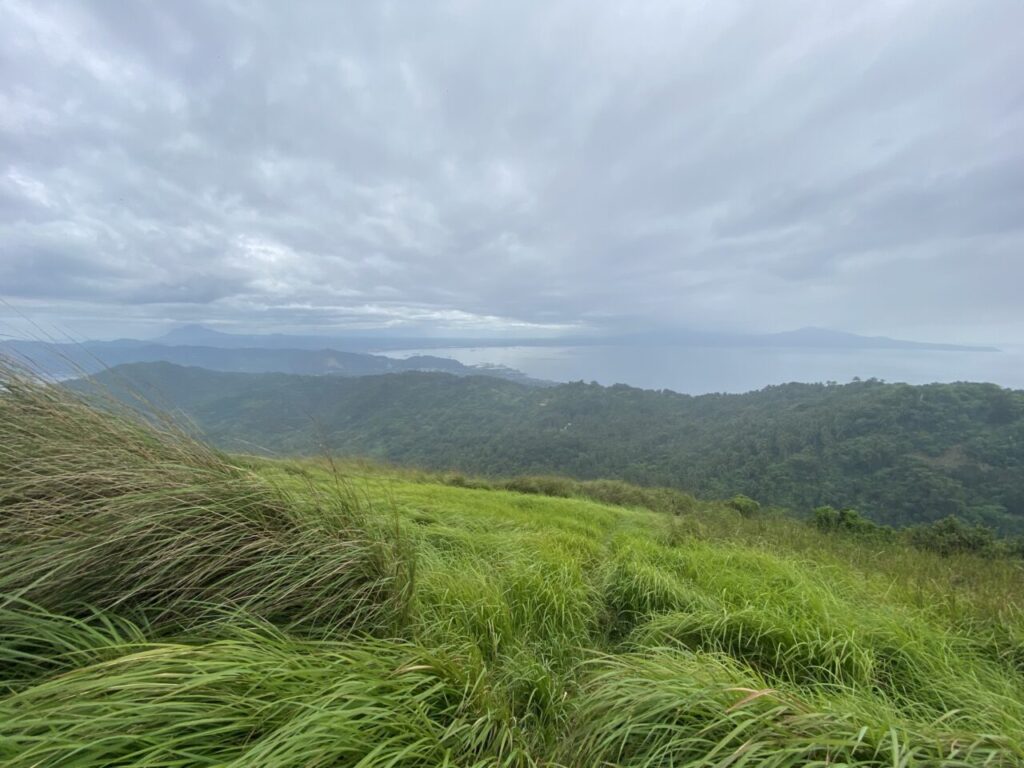
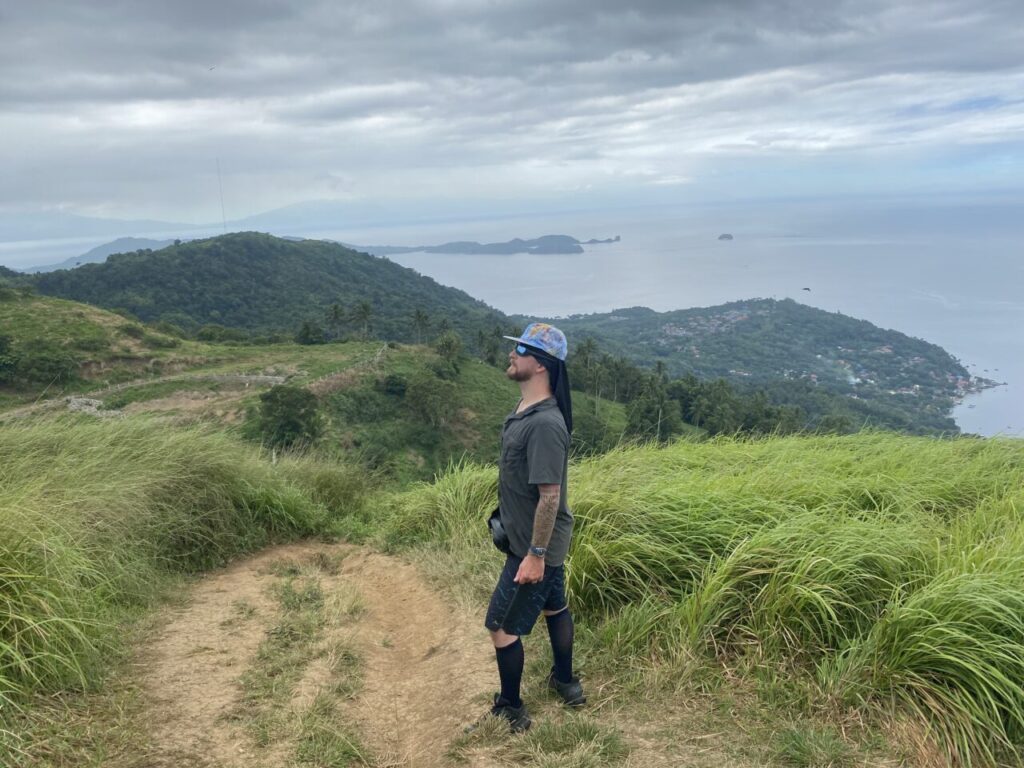
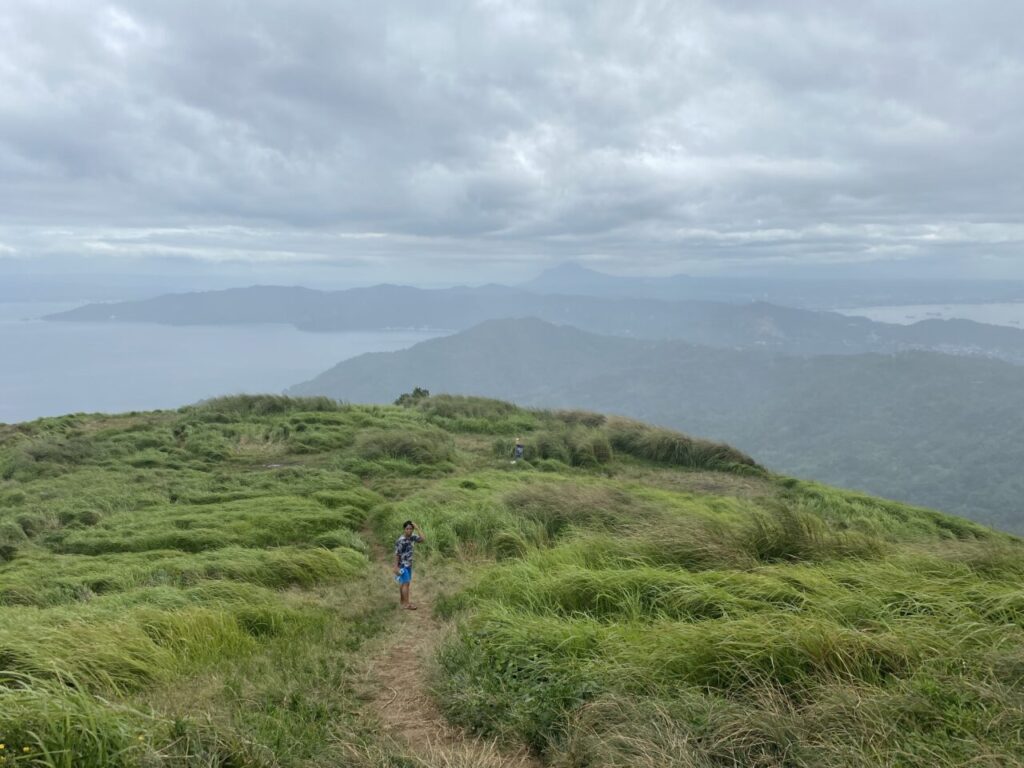
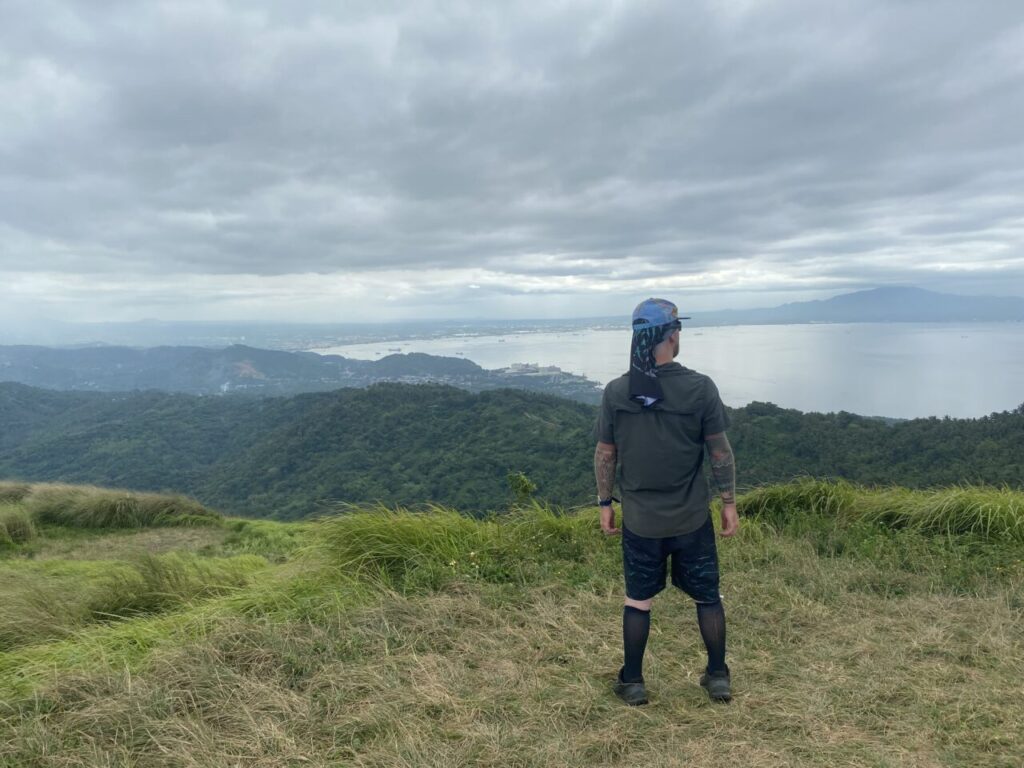
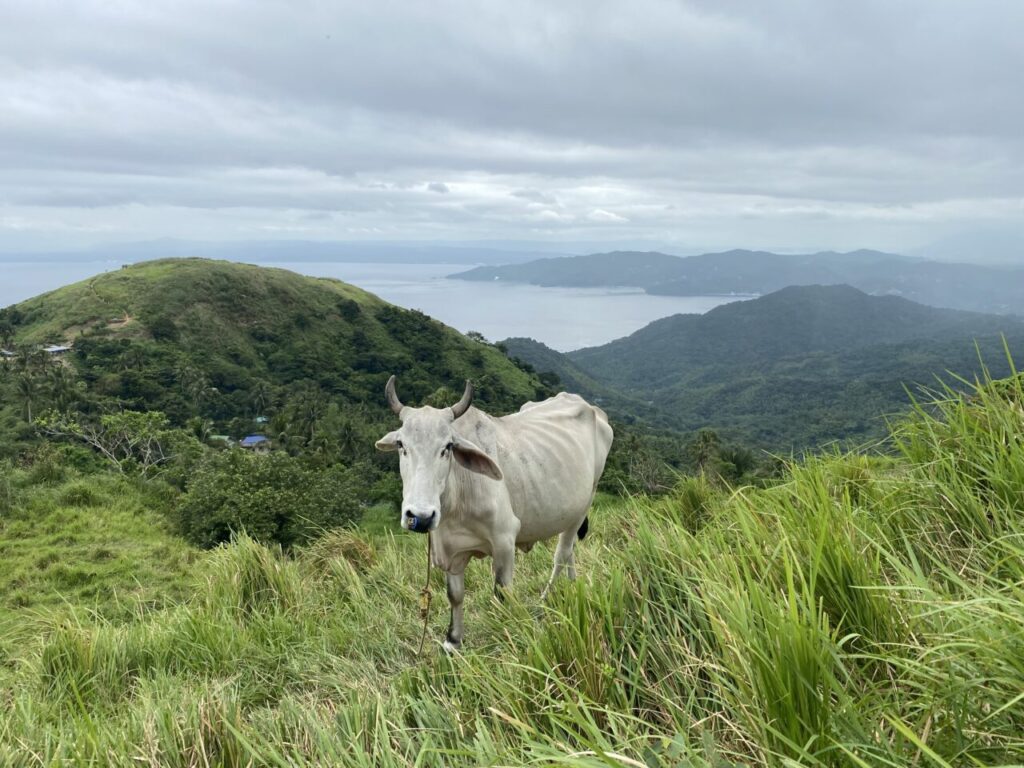
Anilao, Batangas Diving Squad Debriefing
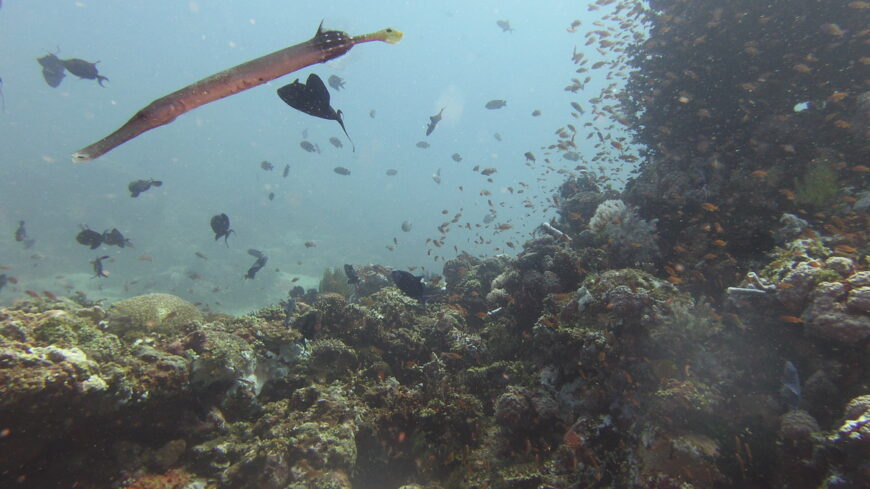
And just like that we’ve finished this epic guide of awesomeness to scuba diving Anilao, one of the easiest to reach, best for muck and macro diving and only places for blackwater diving, in the Philippines.
This is a great dive destination to get scuba certified, macro photography (just don’t touch that coral dammit!) trying out muck diving and blackwater diving for the first time. The coral reef is decent; in places very nice; in others pretty damaged but still sure to impress especially newbie divers which Anilao is a great place for with many getting their open water and advanced open water certs here.
Anilao is easy to reach and set amidst a beautiful location; it’s sleepy seaside town vibes are very laid back and chill and there’s also some great extra activites like trekking (notably Mount. Gulogod), fishing, kayaking and windsurfing.
It’s worth noting that at most dive resorts, Anilao is more expensive to dive at compared to other Philippines dive destinations; however I’ve helped you around this by listing the all time cheapest dive centre and resort in all of Anilao.
The info you’ve read today is all based of my own experience Anilao in November 2023 whilst also incessantly asking all the local divers there all about it – so you can rest assured that what you’ve read today is legit. At Diving Squad we also constantly review and update our contents so you can also sleep well knowing that this page reflects the very latest info and knowledge about diving Anilao.
Now! Here’s some related articles for you:
- Puerto Galera Diving: Located on Mindoro, the next island down from Luzon, Puerto Galera can be reached from Anilao in just 90 minutes via ferry. It’s great for a variety of diving including drift dives, wreck dives, muck dives and blackwater dives.
- Dumaguete: Located all the way way down South on Negros Island in the Philippines Visayas region, Dumaguete is one of the only other places you can go muck diving amidst silty bottoms looking for cuttlefish, tiny nudis and other unusual critters.
- Scuba Diving the Philippines like a BOSS! My all encompassing article to diving the many incredible islands and regions of the Philippines, something I’ve been doing on and off for nearly ten years. Ooh-rah!
